OLD TRAVANCORE KINGDOM AND KERALA PHOTOS
 |
| Coat of arms |
 |
| TRAVANCORE Flag |
 |
| OLD TRAVANCORE SEAL |
![[Travancore]](http://flagspot.net/images/i/in-travt.gif)
[ensign flag to show Travancore as vassal or subordinate state to Britain]
 |
Coat of arms - Kingdom of Cochin
The
'Coat of arms' of erstwhile 'Kingdom of Cochin', seen at the front arch
of Sakthan Thampuran Palace - a major landmark of Thrissur, Kerala's
cutural hub. Thrissur was one of the capitals of Cochin Kings, who ruled
for centuries before merging with the Union of India.
Images of British India:-http://peopleofindia1868-1875photos.blogspot.in/2011/11/images-of-british-india.html
|

pic taken by Travancore Palace Photographers at Vallarpadam Island.[COVERING BREAST WITH A BLOUSE WAS NOT YET FASHION THEN]

View with stone bridge, AlleppeyDescription: Photograph taken about 1900 by the Government photographer, Zacharias D'Cruz of the stone bridge in the town of Alleppey, in the erstwhile Travancore. . The town owes its origin to Raja Kesava Das, the illustrious Dewan in the latter part of the 18th century. Often called the 'Venice of Travancore', it is almost surrounded by sea and backwaters and the many canals that intersect the town, carrying 'vallams' or country-craft laden with merchandise. The port was opened in 1762, when Kesava Das built three ships for trade with Calcutta and Bombay, and was chosen

Alleppey No.1Description: Photograph taken about 1900 by the Government photographer, Zacharias D'Cruz of a canal scene in the town of Alleppey, in the erstwhile Travancore State. It is one of 76 prints in an album entitled 'Album of South Indian Views' of the Curzon Collection. This town owes its origin to Raja Kesava Das, the illustrious Dewan in the latter part of the 18th c.

pic taken by Travancore Palace Photographer of Bolgatty Palace, the Chief Residency of Hon. British Resident to Cochin[Trivandrum residence is near model school Trivandrum]
 |
VIEW NEAR CHAVRAY [?CHAVARA].DESCRIPTION: TAKEN FROM THE CURZON COLLECTION, 'ALBUM OF SOUTH INDIAN VIEWS', THIS PHOTOGRAPH WAS TAKEN BY ZACHARIAH D'CRUZ C.1900 AND SHOWS A CANAL, SET AMIDST A COCONUT PLANTATION, ALTHOUGH THE LOCATION IS UNIDENTIFIED IT IS PROBABLY AT CHAVARA, NORTH OF QUILON (SEE MAP ACCOMPANYING THE TRAVANCORE STATE MANUAL (1906)). GEORGE NATHANIEL CURZON WAS UNDER SECRETARY OF STATE AT THE FOREIGN OFFICE BETWEEN 1895-98 AND VICEROY OF INDIA BETWEEN 1898-1905. |

BISON HUNT BY WHITE RULERS
History of Travancore from the earliest times(click and read on line)
By P. Shungoonny Menon:-http://books.google.co.in/books?id=gxsrz7DAPxIC&pg=PR11&lpg=PR11&dq=travancore+kings&source=bl&ots=qZ637nx7_P&sig=RC22FEP0DEIY1cWTEhS1r1P4OfU&hl=en&ei=hdHFTvy0G4XMrQeAtKDiCw&sa=X&oi=book_result&ct=result&resnum=7&ved=0CFcQ6AEwBg#v=onepage&q=travancore%20kings&f=false


 HAND PULLED RICKSHAWS WERE COMMON IN THE TOWNS OF TRAVANCORE AND COCHI N
HAND PULLED RICKSHAWS WERE COMMON IN THE TOWNS OF TRAVANCORE AND COCHI N
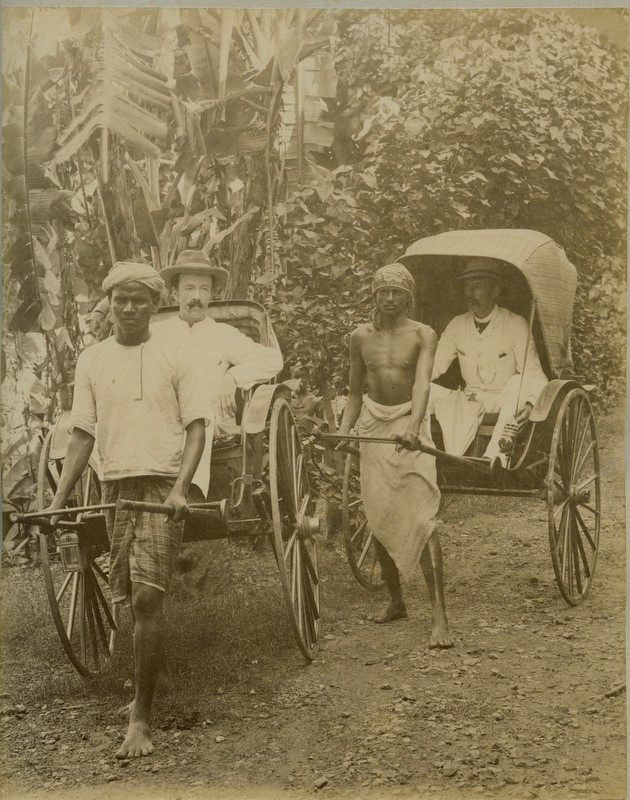


coal -gas bus .coal is converted into coal gas ,by cranking the handle for about 15 minutes .the coal gas was used to run the buses in 1940-1945 during 2nd world war ,due to non availability of petrol

A TYPICAL CHEVROLET BUS OF 1940-1960 ,USED WITH PETROL ENGINE OR WITH COAL GAS ENGINE ,DIESEL,C.N.G,AND L.P.G WERE UNKNOWN THEN,
 1940'FARGO'BUS
1940'FARGO'BUS
open side buses were common in interior Travancore-official name "charabanc"but popularly called 'chatak':-http://en.wikipedia.org/wiki/Charabanc

Hand Operated Petrol Pumps1940:-http://pazhayathu.blogspot.com/2009/09/history-of-petrolgasolene-pumps.html
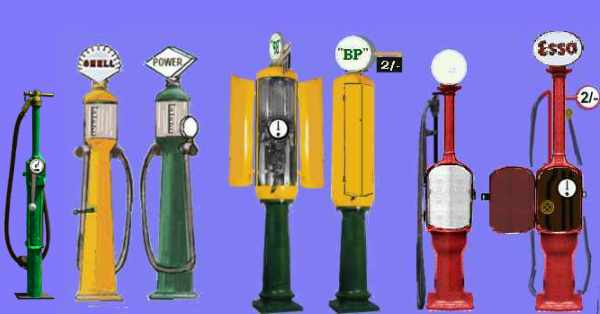
PETROL PRICE IN 1950-1 GALLON=3.78 LITER =RS 15
1 LITER PETROL 4 RUPEES

"charabanc' bus of 1940-50

THE FIRST INDIAN MADE CAR -HINDUSTAN-1950'S
In 1949, the Morris 10, made by HM's British partner Nuffield, was driven out of the Birlas' Uttarpara plant near Kolkata as the Hindustan 10. In the next decade and a bit, its evolution (see box) into the Ambassador
Premier
Automobiles Ltd (PAL) was promoted by Walchand Hirachand, in
collaboration with the Chrysler Corporation of the US. In March 1947,
the company began assembling Chrysler products: Dodge, De Soto, and
Plymouth cars and Dodge, De Soto and Fargo trucks. Indigenistion started
in 1949 with the manufacture of radiators, mufflers, springs, propeller
shafts, shock absorbers, etc.
In 1950 PAL entered into a collaboration with Fiat, SpA of Italy and started assembly of Fiat 1100 cars. In 1953, following the Tariff Commission report, the Government of India granted protection to the automobile industry, thus enabling Premier Automobiles to step up its manufacturing program with full vigour and, in 1954, the first Indian-made ‘Fiat 1100’ cars rolled out.
In the early years of the automotive industry, more attention was paid to manufacturing cars than buses and trucks. The progressive manufacture of Tata-Mercedes-Benz diesel trucks and buses in India began in Poona in October 1954, after Tata Motors and Daimler-Benz had tied up. And the next year Ashok Leyland began manufacture of its Comet trucks. Fords and General Motors, not confident of indigenising production, may have pulled out, but the Indian manufacturers confidently forged ahead. And the Indian Automobile Industry had by the late 1950s put down firm roots.


1877-TRAVANCORE STATE[NOW KERALA] AGRICULTURAL ACTIVITIES----[BEFORE POLITICS INVADED AGRICULTURE ACTVITIES]





coal -gas bus .coal is converted into coal gas ,by cranking the handle for about 15 minutes .the coal gas was used to run the buses in 1940-1945 during 2nd world war ,due to non availability of petrol

A TYPICAL CHEVROLET BUS OF 1940-1960 ,USED WITH PETROL ENGINE OR WITH COAL GAS ENGINE ,DIESEL,C.N.G,AND L.P.G WERE UNKNOWN THEN,
 1940'FARGO'BUS
1940'FARGO'BUSopen side buses were common in interior Travancore-official name "charabanc"but popularly called 'chatak':-http://en.wikipedia.org/wiki/Charabanc
Hand Operated Petrol Pumps1940:-http://pazhayathu.blogspot.com/2009/09/history-of-petrolgasolene-pumps.html

PETROL PRICE IN 1950-1 GALLON=3.78 LITER =RS 15
1 LITER PETROL 4 RUPEES
Trivandrum - Kollam route The first bus service was started in 1908 by a public company by name Meenachil Motor Association

"charabanc' bus of 1940-50
A TYPICAL TAXI ON ROAD IN TRAVANCORE 1940:-
THE CLEANER/CONDUCTOR USED TO STAND ON THE DOOR STEP
Plymouth 5 passenger sedan 1932
TAXI-NEW YORK -1920-30
BELOW-STARTING CAR BY HAND CRANK -A USUAL SCENE ON TRAVANCORE STREETS 1940'S

THE FIRST INDIAN MADE CAR -HINDUSTAN-1950'S
In 1949, the Morris 10, made by HM's British partner Nuffield, was driven out of the Birlas' Uttarpara plant near Kolkata as the Hindustan 10. In the next decade and a bit, its evolution (see box) into the Ambassador
| HINDUSTAN ON WHEELS: THE MANY AVATARS OF THE AMBASSADOR |
 The Hindustan Motors plant began rolling out cars modelled on the Morris cars of Britain. For instance, the Hindustan 14. 1954: Landmaster Looked like the Amby from the front but had a different back. Introduced the "trafficator"; 74 per cent market share.  The Ambassador finally arrived as a sort of sleeker, souped up Landmaster. It defined the Ambassador's size for the next half-century.  First of the upgraded Ambassadors. Followed by Mark III (1975), IV (1979), Nova (1990) and Classic (1999). Most Indians couldn't tell the difference though. |
In 1950 PAL entered into a collaboration with Fiat, SpA of Italy and started assembly of Fiat 1100 cars. In 1953, following the Tariff Commission report, the Government of India granted protection to the automobile industry, thus enabling Premier Automobiles to step up its manufacturing program with full vigour and, in 1954, the first Indian-made ‘Fiat 1100’ cars rolled out.
In the early years of the automotive industry, more attention was paid to manufacturing cars than buses and trucks. The progressive manufacture of Tata-Mercedes-Benz diesel trucks and buses in India began in Poona in October 1954, after Tata Motors and Daimler-Benz had tied up. And the next year Ashok Leyland began manufacture of its Comet trucks. Fords and General Motors, not confident of indigenising production, may have pulled out, but the Indian manufacturers confidently forged ahead. And the Indian Automobile Industry had by the late 1950s put down firm roots.
Tata's commercial vehicles
1954 Collaboration with Daimler Benz AG, West Germany, for manufacture of medium commercial vehicles. The first vehicle rolled out within 6 months of the contract.
1977 First commercial vehicle manufactured in Pune.
1954 Collaboration with Daimler Benz AG, West Germany, for manufacture of medium commercial vehicles. The first vehicle rolled out within 6 months of the contract.
1977 First commercial vehicle manufactured in Pune.

some vehicles,carts kerala 1900 -2000 -- click and SEE---http://pazhayathu.blogspot.in/2012/02/hand-pulled-rickshaws-were-common-in.html
TRAVANCORE RUPEE
The rupee was the currency of the State ofTravancore. Unlike the Indian rupee issued by the British, the rupee of Travancore was subdivided into 7fanam, each of 4 chukram or 64 cash. The Travancore currency was issued until 1949 before being replaced by the Indian rupee.16 CASH=I CHUCKRAM
4 CHUCKRAM =1 PANAM
7 PANAM =1 RUPEE
TRAVANCORE -ONE RUPEE

TRAVANCORE- HALF RUPEE
| ONE PANAM- TRAVANCORE |
QUARTER RUPEE -TRAVANCORE
ONE CHUCKRAM -TRAVANCORE
| FOUR CASH -TRAVANCORE [THIS WAS THE PRICE OF ONE DOSA THOSE DAYS] |
EIGHT CASH-TRAVANCORE= 1/2 CHUCKRAM
ONE CASH -TRAVANCORE
RUPEE -BRITISH INDIA -1940
One British Rupee was 28 and a half chakkaram and one sarkar ( Travancore Government) rupai was 28 chakarams. One chakaram was 16 kasu.
ONE British rupee was made up of 16annas and
one anna was equal to 12 pices:-.
BRITISH RUPEES

 British Nickel 1 Rupee, 1/2 Rupee & 1/4 Rupee (Obverse & Reverse)
British Nickel 1 Rupee, 1/2 Rupee & 1/4 Rupee (Obverse & Reverse) British Annas
British Annas British 4 Annas, 2 Annas - Nickel & 1 Anna (Obverse & Reverse):- ABOVE
British 4 Annas, 2 Annas - Nickel & 1 Anna (Obverse & Reverse):- ABOVEBRITISH 1/4 Anna, 1/2 Pice :- BELOW

 BRITISH 1/4 Anna, 1/2 Pice & 1/12 Anna OR 1 Pie (Obverse & Reverse)
BRITISH 1/4 Anna, 1/2 Pice & 1/12 Anna OR 1 Pie (Obverse & Reverse)
God Save The King- BRITISh Anthem [TILL 1947 INDIA'S ALSO]
BRITISh Anthem
God Save The King Lyrics
God save our gracious king
Long live our noble king
God save the king
Send him victorious
Happy and glorious
Long to reign over us
God save the king



Rupees One Hundred

Rupees One Thousand

Rupees Ten Thousand
Long live our noble king
God save the king
Send him victorious
Happy and glorious
Long to reign over us
God save the king


Rupees One Hundred

Rupees One Thousand

Rupees Ten Thousand

Ariancavoo [Ariyankavu] Temple
Title: 
Ariancavoo [Ariyankavu] TempleDate: [1900] ;c. 1900Creator: Photographer : D'Cruz, ZachariahDescription: Photograph taken about 1900 by the Government photographer, Zacharias D'Cruz of the Shastha temple, Aryankavu in the erstwhile Travancore State. The photograph shows a general view looking down onto the temple buildings at Aryankavu, situated a few miles west of Shencottah in Tamilnadu. It is a small village on the ghat section of what was the Travancore railway, overlooking the mountain pass zigzagging from Madura and Tirunelveli to Travancore through the hills and the forests. The temple dedicated to the deity 'Shasta', the guardian of the hills, was very close

Ariancavoo [Ariyankavu] TempleDate: [1900] ;c. 1900Creator: Photographer : D'Cruz, ZachariahDescription: Photograph taken about 1900 by the Government photographer, Zacharias D'Cruz of the Shastha temple, Aryankavu in the erstwhile Travancore State. The photograph shows a general view looking down onto the temple buildings at Aryankavu, situated a few miles west of Shencottah in Tamilnadu. It is a small village on the ghat section of what was the Travancore railway, overlooking the mountain pass zigzagging from Madura and Tirunelveli to Travancore through the hills and the forests. The temple dedicated to the deity 'Shasta', the guardian of the hills, was very close
TAME ELEPHANTS USED TO HUNT AND CATCH WILD ELEPHANTS 1876
ELEPHANTS PULLING A STALLED RAILWAY STEAM ENGINE
Travancore branches of the South Indian Railway started in 1899-1900.The railway line from Kollam to Punalur was opened for train services in 1904.
Kollam-Thiruvananthapuram line work was completed in 1917 and the line opened in 1918
first railway line was laid between Beypore and Tirur IN 1861
The Shoranur-Ernakulam line, opened in 1902 as a metre gauge line, was converted into broad gauge in 1934.
PEOPLE SCARED BY THE SOLAR ECLIPSE,NORTH KERALA
 |
Tellicherry in the 1850.The British established their presence in Kerala in 1682, when they obtained permission from the Vadakkilamkur Prince of Kolattunad to settle at ThalasseryCricket
Sir
Arthur Wellesly, later Duke of Wellington introduced cricket in
thalassery, sometime during the last decade of the eighteenth
century.[1790-1800] He did not have enough players in his establishment.
He got his persons, dhobies who washed his clothes near the well in one
corner of the Thalassery stadium, fisherfolk from their colony and many
others to make up the numbers. It took more than half a century (1860)
for the first cricket club, Tellicherry Town Cricket Club, to be formed.
|




Duke of Wellington[ Sir Arthur Wellesly]&Tellicherry fort
Pazhassi Raja Tomb
Memorial
of the Lion of Kerala Veera Pazhassi Raja, who organized a guerrilla
warfare against the British East India Company the pulpally cave is
where pazhassi took refuge untill he was captured by the british
RELATED READINGS(ON LINE):-WAR BETWEEN-[1]
Arthur Wellesley VS PAZHASSI RAJA
[2]War: Arthur Wellesley vs Napoleon:-http://www.youtube.com/watch?v=xXoNq0wTBMo

ONE OF THE EARLIEST Cricket ClubS IN INDIA:-was formed in 1860 at Tellichery, keralaThe Calcutta Cricket and Football Club is known to be in existence by 1792, but was possibly founded more than a decade earlier.Sir
Arthur Wellesly, later Duke of Wellington introduced cricket in
thalassery, sometime during the last decade of the eighteenth
century.[1790-1800]
In 1799, another club was formed at Seringapatam(SREE RANGA PATTNAM) in
south India after the successful British siege and the defeat of Tipu Sultan. In 1864, a Madras v. Calcutta match was arguably the start of first-class cricket in India.
View of the Fort, Cannanore, from the Bay-1820
Anglo-Vernacular School, Mavelikkara, Travancore-1865
Backwater, Travancore.-1900 [BEFORE ARRIVAL OF TOURISM INDUSTRY AND HOUSE BOATS]
Syrian church at Kottayam, Travancore State Artist: Bateman1835
Chengannur River [Travancore]--1900
1872-TRAVELLING BY OPEN PALANQUIN
Photograph taken about 1900 by the Government photographer, Zacharias D'Cruz of a view of the Normal School, Trivandrum in the erstwhile Travancore State.The school was two storeyed with pitched roof and projecting dormers of carved wood in local style. When the Government of Travancore first established English schools it obtained teachers from outside. In 1894 a Normal School Institution was established in Trivandrum in the name of English Normal School. It consisted of three classes in which those who had passed the Lowers Secondary, Matriculation and F. A. Examinations were trained. The Government sanctioned two Normal Schools during 1883-84, one at Trivandrum and the other at Kottar for the training of teachers for Vernacular schools. The services of a duly qualified and trained teacher from Madras were secured to start the Normal School at Trivandrum. The School at Kottar was abolished in 1894, and the one at the Capital was amalgamated in 1900 with the English Normal School established in 1894.
Distant view of the Kannakacunoo Palace [Trivandrum]
Photograph taken about 1900 by the Government photographer, Zacharias D'Cruz of the Kanakakunnu Palace, Trivandrum in the erstwhile Travancore State. It is one of 76 prints in an album entitled 'Album of South Indian Views' of the Curzon Collection. George Nathaniel Curzon was Under Secretary of State at the Foreign Office between 1895-98 and Viceroy of India between 1898-1905.
Photograph taken about 1900 by the Government photographer, Zacharias D'Cruz of the Kanakakunnu Palace, Trivandrum in the erstwhile Travancore State. It is one of 76 prints in an album entitled 'Album of South Indian Views' of the Curzon Collection. George Nathaniel Curzon was Under Secretary of State at the Foreign Office between 1895-98 and Viceroy of India between 1898-1905.
Dewan's official Residence [Trivandrum]Description:Photograph taken about 1900 by the Government photographer, Zacharias D'Cruz of a view of the Dewan's official residence.. George Nathaniel Curzon was Under Secretary of State at the Foreign Office between 1895-98 and Viceroy of India between 1898-1905. The Dewan is the Prime Minister of the Princely State
| Travancore police |

![[Bishops of the Syrian Orthodox Church congratulating C]](http://images.ookaboo.com/photo/m/CpSyrianbishops1939_m.jpg) |
| 1939.--Bishops of the Syrian Orthodox Church congratulating C P RAMASWAMI IYER |

The Maharaja and Maharani of Travancore with the Governor of Madras, Lord Erskine, and Lady Erskine at Travancore House, in Adyar, on March 4, 1937, where the Maharaja hosted a party for the Governor. The Dewan of Travancore, Sir C.P. Ramaswamy Aiyer, is seen standing second from left.
Residency [Trivandrum]
![Residency [Trivandrum]](http://ogimages.bl.uk/images/019/019PHO000430S45U00005000[SVC2].jpg)
Photograph
taken about 1900 by the Government photographer, Zacharias D'Cruz of
the British Residency, Trivandrum. George Nathaniel Curzon was Under
Secretary of State at the Foreign Office between 1895-98 and Viceroy of
India between 1898-1905. It shows a general view of the two-storey
building from the garden, with porte-cochère in the foreground
 Colonel John Munro1812-1814 A.D History
has recorded that Colonel John Munro was the greatest British
Administrator of Travancore and Cochin in 150 years of British Dominion.John Munro went back to his birth place in Teaninich, Ross Shire in Scotland and lived there until he died in 1858.
Colonel John Munro1812-1814 A.D History
has recorded that Colonel John Munro was the greatest British
Administrator of Travancore and Cochin in 150 years of British Dominion.John Munro went back to his birth place in Teaninich, Ross Shire in Scotland and lived there until he died in 1858.Munro Island[MUNROE THURUTH] IS NAMEDAFTER HIM
 |
| MUNROE ISLAND |

Industrial School of Arts [Trivandrum]Description:Photograph taken about 1900 by the Government photographer, Zacharias D'Cruz of the Industrial School of Arts, Trivandrum.George Nathaniel Curzon was Under Secretary of State at the Foreign Office between 1895-98 and Viceroy of India between 1898-1905. A 'School of Arts' was established by the Travancore Government in Trivandrum in 1862-63. In 1872-73, a small establishment of carving in ivory under the direction of a Brahmin. In 1890, the School was named an 'Industrial School' and secured the services of two potters from the Madras School of Arts. A separate building was provided for the School. Later painting and photography was added to the Arts branch and a smithy to the Industrial br..
Maharajah Ayilyam Thirunal of Travancore (center) with the first prince(left) and Dewan Sit T. Madhava Rao (right [SIR T.MADHAV RAO'S STATUE IS OPPOSITE TRIVANDRUM SECRETARIAT BUILDING .AND IS KNOWN AS STATUE JUNCTION]
Statue of Raja Sir T. Madhava Rao

This
is one of the most popular Statues in Trivandrum located at the Statue
Junction just in front of the Secretariat. Raja Sir Tanjore Madhava Rao,
KCSI ( 1828 to April 4, 1891), also known as Sir Madhava Rao
Thanjavurkar, Indian Statesman, born at Cambaconum in Madras Presidency,
son of a Dewan of Travancore. Sir Madhava Rao administered Travancore
with so much skill as justly to entitle him to be considered the Turgot
of India. He found Travancore when he went there in 1858 in the lowest
state of degradation. He has left it a Model State.

View of the Public Offices in Trivandrum, in the erstwhile Travancore.
Copyright (c) British Library Board Shelfmark:Photo 430/45(6); Item number: 430456; Genre: Photograph
The
Cantonment [Palayam], the Public Offices, the residence of the upper
classes, European as well as native, are all beautifully located on
small eminences, commanding beautiful scenery all round. This later
became the centre of rule of Kerala after independence. The Legislative
Assembly was housed here until a new building was made near Palayam.
East entrance & Gopura of Sree Padmanabhaswamy Temple, Trivandrum, in the erstwhile Travancore
Copyright (c) British Library Board Shelfmark:Photo 430/45(1); Item number: 430451; Genre: Photograph
This
9th Century Hindu temple is one of the greatest of Kerala and was the
center of rule by the Travancore Kings for 291 years starting from
1700s. The temple Sreekovil, enshrines a large image of Vishnu, spread
over three doors, and is built in the typical Kerala style. The
surrounding walls and towers are similar to those of the Dravidian
architecture of Tamil Nadu. The imposing gopura or entrance gateway
consists of ascending storeys ending with a vaulted roof and reflect the
contemporary Nayaka style of architecture.KEROSENE STREET LIGHT CAN BE SEEN IN THE TEMPLE PHOTO
STEET LAMP LIGHTER
Lamplighter lighting a gas streetlight in Sweden, 1953. By this time remaining gas lamps were rare curiosities.
THERE IS A SECRET PASSAGE GOING DOWN FROM THE;FIRST FLOOR ; WESTERN END; OF KUTHIRA MAALIKA PALACE(SWATHI THIRUNAL MAHARAJAH'S PALACE).THE DIRECTION OF THIS SECRET TUNNEL IS TOWARDS PADMANABHA SWAMI TEMPLE -TO THE NORTH WEST DIRECTION .THIS SECRET TUNNEL WAS SHOWN TO ME AND OTHER VISITORS AS AN EMERGENCY ESCAPE TUNNEL.
IS IT GOING INTO THE TEMPLE? IS IT CONNECTED WITH THE GOLD HORDE IN THE TEMPLE?NOBODY SEEMS TO KNOW!!
|
 |
| Padmanabhaswamy Temple Diamonds, Emeralds, Rubies, |
![[ROYAARATTU.jpg]](https://blogger.googleusercontent.com/img/b/R29vZ2xl/AVvXsEiBOnr3mgWFP9FdGbV5tz0Q-c1H_PR_B4eVvZYj0juPZq-m5v3zcS6iqclPeZx-8RijwyJrbe9NhUy8WaqfNMWqdBIZ8XozaScCcVxfOLoKNbQb-ixQKjDg6t4HGKRXvAH93mauVG74Lm4/s1600/ROYAARATTU.jpg) |
| AARAATTU PROCESSION TRIVANDRUM 1940'S |
![[a10.jpg]](https://blogger.googleusercontent.com/img/b/R29vZ2xl/AVvXsEi-7k71NLrIHl9sN3I0KTeg05pfcqmtgY9-7wdmV53xNc6fdYQvT6WumVWJznK4amoySMHvkXzpS7tcK9FTrCEX3wHfl5NmfIx1f2rOsc7eD8fhLXCFXsfQQyoiM0hyqe_eTfdCMhLP6Uts/s1600/a10.jpg)
AARAATTU PROCESSION TRIVANDRUM 1940'S-Nair pattalam=soldiers
![[a2.jpg]](https://blogger.googleusercontent.com/img/b/R29vZ2xl/AVvXsEh-4kc2okWb99THJ6pLKY1y9UiZ0Rtw9jABTk6-asowtb1jyNxHAuTY4CJrRuAg01MXDFnUyLJLY8uSSHaszA19Mk-NR2jWpq16bFB7tPOf3DGf876txI6_ayo1IqXFOp8W_iwosGAYAqlq/s1600/a2.jpg)
AARAATTU PROCESSION TRIVANDRUM 1940'S
![[a1.jpg]](https://blogger.googleusercontent.com/img/b/R29vZ2xl/AVvXsEivTlkmefqEYJRbzwVdtGVM_CBu8F8eSDMoZeGFSp9e2NTfvrKkfdzwFCWvZaGKRxvyWEkzmL9kHOyIGAaQlNSTpY9MewLFpEcd3vnuQykbsLfMr9M5FnJp9qt3qxrw5YfwmhnzGSl_fRg/s1600/a1.jpg)
1940'S TRIVANDRUM WELCOMING THE KING
![[a4.jpg]](https://blogger.googleusercontent.com/img/b/R29vZ2xl/AVvXsEgdUODQJ41Whe4KqWNcE0HubqiQIoXwsrTh19-mHU_2PAoKFsNIM7RdnAPwO0i1bm7pqlIx_vqJiwRz7hyphenhyphen8hdISbQS46B9EEg_ARxKInhnT4jZSSXpxhshWgdqvOcQtOakAquP75pkg2VA/s640/a4.jpg)
![[ROYYAA.jpg]](https://blogger.googleusercontent.com/img/b/R29vZ2xl/AVvXsEhuGNawFN5MQVZEhZWSwh7VH11nVB0eTgIButpH9Et1i77CHAetLhqlK-GPrB-XZwpMfoV6gOGug2qANXIgYul7hBM97gQiHYTobU3uHxrq0EUmenIzVl3Ck9ImCNnj671a59ImRj6XewHO/s1600/ROYYAA.jpg)
PEOPLE ARE SUPPOSED TO REMOVE THE CLOTH COVERING THE HEAD(HEADDRESS OR TURBAN), AND TIE IT AROUND THEIR WAIST BEFORE KING COMES
WHEN KING COMES ALL ARE SUPPOSED TO BEND DOWN, FROM THEIR WAIST DOWN ,TILL THE HEAD COMES DOWN TO THE LEVEL OF THE WAIST-- AND--PUT THEIR RIGHT HAND OVER THEIR MOUTH AND COVER MOUTH;AS A SHOW OF RESPECT
WHEN KING COMES ALL ARE SUPPOSED TO BEND DOWN, FROM THEIR WAIST DOWN ,TILL THE HEAD COMES DOWN TO THE LEVEL OF THE WAIST-- AND--PUT THEIR RIGHT HAND OVER THEIR MOUTH AND COVER MOUTH;AS A SHOW OF RESPECT
![[ROYAL.jpg]](https://blogger.googleusercontent.com/img/b/R29vZ2xl/AVvXsEgFxVxjU5RcJ3vgAbBDAC_1DpUIRtyRC4A28Xrpt03teSPLaD8v8OuwRFwhIK4zRLuExB0rLHIZxGq19RzQgum6o_v2RtfeIob8YMvSmgA7capy-j0_RlP3tb4yF_skFRzpjwaBgx7u2F0/s1600/ROYAL.jpg)
TRAVANCORE KING AND THE TRAVANCORE SOLDIERS-TRIVANDRUM
shanghumugham beach

![[a0.jpg]](https://blogger.googleusercontent.com/img/b/R29vZ2xl/AVvXsEg7OxFMClO_7W4ce6fExFGZQ2QLg_mR8injPCNRDxT4HWOYSIw9ecdM3SZiixQmRjmEYg7cKXFVTI0fMDfVC6qcRzQRp3vAKGX1u14niGH3OKutHfgrAyvzQlPBaIYMzcJTwHJFzpVBio8/s1600/a0.jpg)
THE KING SALUTING WHILE DEWAN STANDS NEAR-PLEASE NOTE THE PALACE SOLDIERS STANDING WITH RIGHT HAND OVER THE LOWER FACE , IN SIDE ,TO SHOW THEIR RESPECT

[photo taken at 'palayam' Trivandrum where the soldiers were stationed 1861]-NAIR PATTALAM(SOLDIER) UNDER BRITISH OFFICERS

[photo taken at 'palayam' Trivandrum where the soldiers were stationed 1861]
![[NNNNNAIR.jpg]](https://blogger.googleusercontent.com/img/b/R29vZ2xl/AVvXsEgNhJxqZoYdKyP4WzakC1NnRAS9OmgiHV3E3_Weoj6SAFszssWsOqtnUguvsBz1QDAzUaK73e7HL5N4hQRox99X07sWGhsqCyavMnxi1m0XyU6PHFIGMSDgAzxaDAx9V4swltr98H1aQ2w/s1600/NNNNNAIR.jpg)
![[NAAAIR.jpg]](https://blogger.googleusercontent.com/img/b/R29vZ2xl/AVvXsEhgN4mseVOOAf2B_ao2Q6qUof5H-XlOGELfUVUa5PvskrTkLaI_QWl20pmfCAPoQzwEYG6__tezQ7myl87moI2vwYJxh8Ra3x2mQyxBHVB2YqSkY2N8JQAARgPXlQNkDpg7xTJxWFumJnGZ/s1600/NAAAIR.jpg)
Gold Coins(A) Gold Pagoda Early issue 1678-1740
(B) Arcot Gold Mohur
(C) Gold Pagoda 1808-1815AD series, ND
(D) Mohur 1819
(E) ½ Mohur, ND (1819), 5 Rupees, ND (1820) and ¼ Ashrafi, ND (1819)
(F) Double Pagoda, ND (AD 1809-1815) : 18 Stars type
(G) 5 Rupees, Gold, ND (AD 1820)
(H) Star Pagoda
(I) 3 Swami Pagoda
(j) AIN Pagoda

 Nagapada Thali - 2 | 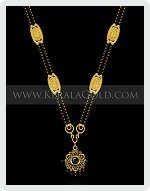 Karimani Mala | 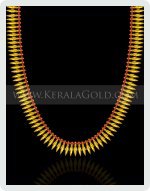 Mullamottu Mala |
 Manga Mala - 1 |  Manga Mala - 2 |  Kazhuthila |
 Cheruthali |  Avilmala |  Kandassaram |
 Kingini |  Kuzhiminni |  Pulinakhamala |
 Kumbilmala |  |
The monetary system used was:
| golden fanam(panam) |
- 52 1/2 Fanam=1 Pagoda



Travancore. Rama Varma IV gold Sovereign 1881 ME1057,
TRAVANCORE COINS WITH THE HEAD OF TRAVANCORE KING SRI CHITHIRA THIRUNAL MAHARAJA
THE BULLOCK CART DRIVER SLEEPS THE WHOLE DISTANCE ,IF THE ROUTE IS KNOWN TO THE BULLOCK.BULLOCKS KNOWS HOW TO KEEP TO THE LEFT SIDE -MUCH BETTER THAN MANY OF THE DRUNK HUMAN DRIVERS[THEN AND NOW] .THE LEADING CART DRIVER HAS TO KEEP AWAKE ONLY IF THE ROUTE IS NOT KNOWN TO THE BULLOCK..THE CARTS BEHIND DRIVERS ALSO ROUTINELY SLEEP BECAUSE ALL FOLLOW THE LEAD CART.
![[India+1910_6.jpg]](https://blogger.googleusercontent.com/img/b/R29vZ2xl/AVvXsEj3TI-f8IO60MP_SOpGJzh92dXSM_HDi86DlXM7viAhyphenhyphen1b5afTpG01qmm5cAlHR7561tD5V1OQMO6vnP0gd-r-Go9AgyNIULxZmqLd83l5BYLKreUVgrjEbZnSYbiy68w7DhiA74W5jpyI/s400/India+1910_6.jpg)
TO THE WEEKLY MARKETS-
On openlibrary.org:-http://www.archive.org/stream/nativelifeintra02mategoog#page/n1/mode/2up
TO THE WEEKLY MARKETS-FILM-Phagun(1958)-Sun Jaa Pukaar (Asha Bhonsle)TO SHOW HOW FARMERS TRAVELED TO WEEKLY MARKETS-IN LONG LINE OF CARTS IN KERALA AND INDIA

SIMILAR STEAM (ENGINE) ROLLER USED FOR THE ROADS
OLD CARD TICKET OF INDIAN RAILWAY

| A metre gauge steam locomotive pulling into a station in Cochin-ON THE WAY TO KTYM-KOTTAYAM 1966 |

MADRAS(NOW CHENNAI) TO TRIVANDRUM(THIRUANANDAPURAM)- 1950 IN 4 HOURS- THE FASTEST PLANE BEFORE JET PLANES CAME IN 1960'S-( 'DAKOTA'PLANE ) .THE ONLY FLIGHTDAILY; FROM THE ONLY AIRPORT OF KERALA IN 1950;STARTING FROM TRV: AROUND 12 NOON AND REACHING MADRAS/CHENNAI PAST 3 P.M (COCHIN NAVAL AERODROME WAS NOT FOR CIVILIAN USE THEN)
DAKOTA PLANE-TAKE OFF
 |
| above-'miles merlin' plane for Bombay Trivandrum flight 1933
Mumbai toTrivandrum with a six-seater Miles Merlin.
In 1939, the Travancore Royal house acquired an air craft of its own ,a dakota |
Tata Airlines launched its longest domestic flight -

A TYPICAL DAKOTA PLANE WHICH USED TO HAVE ONCE A DAY SERVICE TO MADRAS(NOW CHENNAI) FROM TVM AIRPORT


ABOVE-THE EAST FORT,THIRU ANANTHA PURAM
The first Malayalam feature film
| Vigathakumaran (The Lost Child) | |
|---|---|
 A scene from the film | |
| Directed by | J. C. Daniel |
| Produced by | J. C. Daniel |
| Written by | J. C. Daniel |
| Starring | J. C. Daniel Rosie Johnson Sundar Raj |
| Cinematography | J. C. Daniel |
| Editing by | J. C. Daniel |
| Studio | Travancore National Pictures |
| Release date(s) | November 7, 1928 |
| Country | India |
| Language | Malayalam |
OLD-HAND CRANKED FILM PROJECTOR ,USED IN KERALA
All India Radio Signature Tune..
v The Baroda Broadcasting station was set up in 1939.v The Maharaja of Travancore set up a transmitter at Trivandrum in the same year. When
India became independent in 1947 the AIR network had only six stations
(in Delhi, Bombay, Calcutta, Madras, Lucknow, and Tiruchi)v All India radio renamed as `Akashwani` since August 15th, 1957 At
first malayalam news had started broadcasting from delhi AIR division
in the year 1949 and later in 1957 an independent radio station has
started in Trivandrum solely for keralites. .At first there was only one news bullettin and one station,in a small building behind present MLA hostel,later shifted to the present building in Trivandrum.1950-1990
radio era:- INDIA had no music channel and LISTENED TO 'BINACA GEET
MALA'FROM RADIO CEYLON(NOW SREE LANKA)TILL 1957 ,WHEN INDIAN CHANNEL
'VIVIDH BHARATHI'STARTED
CLICK AND LISTEN:-http://youtu.be/drU9yX50g00
REGULAR TV SHOWS STARTED IN 1970'S,THERE WAS ONLY ONE CHANNEL TILL 1991 WHEN MANY FORIEGN TV CHANNELS WERE ALLOWED IN INDIA

A distant view of the Central Jail in Thiruvananthapuram
Copyright (c) British Library Board Shelfmark:Photo 430/45(25); Item number: 4304525; Genre: Photograph
Central
Jail building before the occupation of being a jail served as the
barracks for the Nayar Brigade, where prisoners serving short-terms were
confined. These prisoners were locked up at night and guarded by Jail
warders and brigade sepoys. A large number of them were employed in the
making and repairing of roads both at Trivandrum and at Quilon (Kollam).
Others in small groups, were made to work day to day for garden work in
the Palaces, Hospitals, Sirkar buildings and Public Gardens. There was
also a hospital in a seperate building, attached to the jail premises.
A view of the Chief Engineer's Office, Trivandrum in the erstwhile Travancore State.[LATER
The College of Engineering, Trivandrum, . Founded in 1939, FUNCTIONED IN THIS PREMISES TILL IT SHIFTED OUT]
The College of Engineering, Trivandrum, . Founded in 1939, FUNCTIONED IN THIS PREMISES TILL IT SHIFTED OUT]
Copyright (c) British Library Board Shelfmark:Photo 430/45(18); Item number: 4304518; Genre: Photograph

Christ Church and cemetry in Trivandrum in the erstwhile Travancore State
Copyright (c) British Library Board Shelfmark:Photo 430/45(11); Item number: 4304511; Genre: Photograph
The Church, belonged to the London Missionary Society and is situated in the Cantonment area Palayam.Christ Church-at palayam- interior [Trivandrum]--Photographer: D'Cruz, Zachariah Medium: Photographic print Date: 1900
{Note:-.the
long [ photo taken before electricity came to trivandrum city in 1929.
it shows kerosene lanters and hand pulled punkah(fan)which can be seen
on both sides as a long strip of cloth}
![Christ Church interior [Trivandrum]](http://ogimages.bl.uk/images/019/019PHO000430S45U00073000[SVC2].jpg)
![Christ Church interior [Trivandrum]](http://ogimages.bl.uk/images/019/019PHO000430S45U00073000[SVC2].jpg)
for a Fan Moved by Mechanism,
27 November 1830.A PUNKAH[HAND PULLED FAN] PULLER IS EMPLOYED TO PULL
THE PUNKAH CORD ,FROM OUT SIDE THE WINDOW .THE MECHANISM IS SIMPLE:- HE
PULLS THE CORD ENOUGH TO MAKE THE MADE OF, MAT FAN ;ALL THE WAY TO THE
WINDOW AND THEN HE LET GO THE CORD TILL THE FAN GOES BACK AUTOMATICALLY
TO THE ORIGINAL POSITION.
 |
Punkha Boy[FAN CORD PULLER BOY] |


FANS WHICH WORK ON KEROSENE-USED BEFORE ARRIVAL OF ELECTRICITY IN 1926

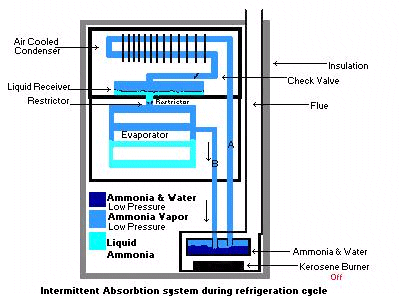
- KEROSENE FLAME REFRIGERATION BEFORE ELECTRICITY CAME 1926
Electric Supply and Telephone:
Application
was made to the British Government in 1081 M.E. (1905-06) for sanction
to install a line of telephone communication connecting Pehipppara with
and Telephone. other principal stations in south Travancore. This line
was taken over from the British Indian Telegraph Department towards the
close of 1086 M.E. (1910-11) and a new station opened at
Chellanthuruthi. It is now run on the one-line system.

Manual exchange, 1955. Photo courtesy Marvin Hodges.The photo gives an idea just how large (and crowded) a manual exchange could be in terms of numbers of staff.
Till 1953 trivandrum telephone exchange
was old magneto system where the phone handle is to be cranked by hand for 2 minutes before it gets connected to the lady in the exchange;who in turn ask you to wait for her return call after contacting your desired customer .the whole process was tedious and time consuming
1951 The first commercial computer, named "First Ferranti MARK I," at the Manchester University.
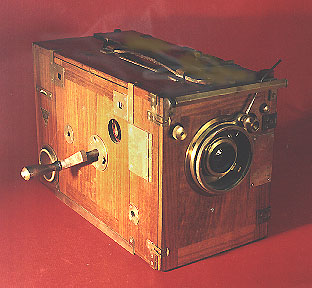 |
| Lytax camera by Apparatebau, Freiburg, Germany[made of wood] There is very little information available about this camera of around 1920[crank the handle for cine films] |
The Trivandrum Electric Supply Scheme was put into execution in 1103 M.E. Mr. K. P. P. P. Menon, Industrial Engineer, was put on special duty from 1-1-1103 M.E. as an Electrical Engineer in the P.W.D. The Electrical Installation of the Trivandrum town including the major portion of the distribution mains was completed in 1104.M.E. On the evening of the 25th February 1929,
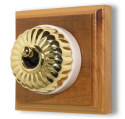


Mounting Blocks for Brass Switches
Fluted Toggle Switch
Porcelain Based
the Silver Jubilee of the Sri Mulam Popular Assembly, the then Dewan, Mr. M.E. Watts, in the presence of a distinguished gathering, switched on the supply and informally opened the Power House. On the 8th March 1929 the supply to the town commenced with 541 street lights and two consumers.
photo Description
"Our Christian lepers in Trivandrum. Government Leper Asylum. Photo taken receiving their Christmas gifts and partaking of the Holy Communion which is always a great pleasure for me to share with them. (Bessie Osborne)." Bessie Osborne was the wife of LMS missionary, William Davey Osborne. They served together in India from 1893 to 1914, at Trivandrum until 1900 when they moved to Attingal.
"Our Christian lepers in Trivandrum. Government Leper Asylum. Photo taken receiving their Christmas gifts and partaking of the Holy Communion which is always a great pleasure for me to share with them. (Bessie Osborne)." Bessie Osborne was the wife of LMS missionary, William Davey Osborne. They served together in India from 1893 to 1914, at Trivandrum until 1900 when they moved to Attingal.

Chalai bazar,;{OPPOSITE FORT AND SRI PADMANABHA SWAMI TEMPLE-KNOWN AS 'KIZHAKKE KOTAH' AT TRIVANDRUM CITY) photograph taken on 1880-SHOWS ONLY RESIDENTIAL HOUSES .THE SAME AREA IS NOW ONLY SHOPS


Trivandrum in the 1930s ;SHOWING BATHING TANK IN FRONT OF THE TEMPLE AND KIZHAKKE KOTAH(FORT GATE ) .FURTHUR EAST CAN SEE THE CHALAI BAZAR ROAD. .THE MAIN ROAD(NOW NAMED M.G. ROAD) IS TO THE LEFT OF THE PHOTO AND CANNOT BE SEEN

PHOTO OF BEACH 1930'S
MALAYALAM NUMERALS AND ALBHABETS


University College, Trivandrum in the erstwhile Travancore State
Copyright (c) British Library Board Shelfmark:Photo 430/45(7); Item number: 430457; Genre: Photograph
Even
though the University college was founded in the year 1834 by the
Government of Travancore during the reign of His Highness Sri Swathi
Thirunal Rama Varma, the building was completed in 1970 by His Highness
Sri Ayilyam Thirunal Rama Varma Maharaja of Travancore. John Ross of the
Edinburgh University was the Principal. This building still stands as
the main block of the University College.
TRAVANCORE[NOW KERALA STATE] NATIVE TEACHERS-1872

SCHOOL BOYS AND MASTERFEW BOYS GOT BOOKS WHILE OTHERS ARE READING FROM'OLA'-PALM LEAF
Palm leaf manuscripts-USED TILL 1940'S 


Maharajah Chithira Thirunal Rama Varma.TITLES:- Major-General His Highness Sri Patmanabha Dasa Vanchipala Sir Bala Rama Varma III, Kulasekhara Kiritapati Manney Sultan Maharaja Raja Ramaraja Bahadur, Shamsher Jang, Maharaja of Travancore, GCSI, GCIE

Photograph taken about 1900 by the Government photographer, Zacharias D'Cruz of the Travancore Maharaja's State Carriage in Trivandrum.. It was drawn by a team of six horses. In the background can be seen the gopuram of the Padmanabha Swamy temple.

The Public Gardens [Trivandrum]
Title: ![The Public Gardens [Trivandrum]](http://ogimages.bl.uk/images/019/019PHO000430S45U00017000[SVC2].jpg)
The Public Gardens [Trivandrum]Description:Photograph taken about 1900 by the Government photographer, Zacharias D'Cruz of the Public Gardens in Trivandrum. The idea of establishing a Public Garden in Trivandrum was sanctioned by the Maharaja in 1859 and was to be accomplished under the direction of John Allan Broun, the Government Astronomer. Several interesting botanical specimens were reared in the garden from seeds and cuttings procured from Bangalore and other cities. In 1879, the Curatorship was abolished and the management of the museum and the gardens was placed under a Committee consisting of t...
![The Public Gardens [Trivandrum]](http://ogimages.bl.uk/images/019/019PHO000430S45U00017000[SVC2].jpg)
The Public Gardens [Trivandrum]Description:Photograph taken about 1900 by the Government photographer, Zacharias D'Cruz of the Public Gardens in Trivandrum. The idea of establishing a Public Garden in Trivandrum was sanctioned by the Maharaja in 1859 and was to be accomplished under the direction of John Allan Broun, the Government Astronomer. Several interesting botanical specimens were reared in the garden from seeds and cuttings procured from Bangalore and other cities. In 1879, the Curatorship was abolished and the management of the museum and the gardens was placed under a Committee consisting of t...

Lake in the Public Gardens No.2 [Trivandrum]

Lake in the Public Gardens No.2 [Trivandrum]Description: Photograph taken about 1900 by the Government photographer, Zacharias D'Cruz of the Public Gardens in Trivandrum. It is one of 76 prints in an album entitled 'Album of South Indian Views' of the Curzon Collection. George Nathaniel Curzon was Under Secretary of State at the Foreign Office between 1895-98 and Viceroy of India between 1898-1905. The idea of establishing a Public Garden in Trivandrum was sanctioned by the Maharaja in 1859 and was to be accomplished under the direction of John Allan Broun, the Government Astronomer.Several interesting botanical specimens were reared in the garden from seeds and cuttings procured from Bangalore and other cities. In 1879, the Curatorship was abolished and the management of the museum and the gardens was placed under a Committee consisting of the ...

Lake in the Public Gardens No.1 [Trivandrum]

Lake in the Public Gardens No.1 [Trivandrum]Description: Photograph taken about 1900 by the Government photographer, Zacharias D'Cruz of the Public Gardens in Trivandrum.. The idea of establishing a Public Garden in Trivandrum was sanctioned by the Maharaja in 1859 and was to be accomplished under the direction of John Allan Broun, the Government Astronomer.Several interesting botanical specimens were reared in the garden from seeds and cuttings procured from Bangalore and other cities. In 1879, the Curatorship was abolished and the management of the museum and the gardens was placed under a Committee consisting of the ..
![Band Stand in the Public Gardens [Trivandrum]](http://ogimages.bl.uk/images/019/019PHO000430S45U00013000[SVC2].jpg)
The Band-Stand in the Public Gardens in Trivandrum
Copyright (c) British Library Board Shelfmark: Photo 430/45(13); Item number: 4304513; Genre: Photograph
The
idea of establishing a Public Garden in Trivandrum was sanctioned by
the Maharaja Uthram Thirunal in 1859 and was to be accomplished under
the direction of John Allan Broun, the Government Astronomer. Several
interesting botanical specimens were reared in the garden from seeds and
cuttings procured from Bangalore and other cities. In 1879, the
Curatorship was abolished and the management of the museum and the
gardens was placed under a Committee consisting of the British Resident
and three European members. In 1897-98, the institutions were placed
under an officer called "Director of the Government Museum and Public
Gardens". The Band-Stand shown here was re-built in the early 1900s.
Band Stand in the Public Gardens [Trivandrum]

BAND
AT BANDSTAND -THIS WAS THE ONLY MUSIC AVAILABLE FOR PUBLIC BEFORE RADIO
,TV AND RECORD PLAYER WERE DISOVERED.USUALLY IT WAS THE POLICE/NAIR
SOLDIER BAND .SOMETIMES SALVATION ARMY BAND ALSO PLAYED AT MUSEUM BAND
STAND
HAND CRANK GRAMAPHONE:-1907 -1940


Varkala.Description: Photograph taken about 1900 by the Government photographer, Zacharias D'Cruz of the Varkala Canal, in the erstwhile Travancore. Varkala near Trivandrum is known for the temple of great antiquity dedicated to Janrdanaswami and for its mineral waters. Springs gush out of the cliffs that rise abruptly on the beach. There are two tunnels close to the temple constructed at a great cost by the Travancore Government. One of them is nearly half a mile in length, bored through the cliffs linking the waterways on either side and establishing through-water communication bet.

Varkala Canal northen view.Description: Photograph
taken about 1900 by the Government photographer, Zacharias D'Cruz of
the Varkala Canal, in the erstwhile Travancore during Lord Curzon's
visit to the State. . Varkala near Trivandrum is known for the temple of
great antiquity dedicated to Janrdanaswami and for its mineral waters.
Springs gush out of the cliffs that rise abruptly on the beach. There
are two tunnels close to the temple constructed at a great cost by the
Travancore Government and opened in 1881. One of them is nearly half a
mile in length, bored through the cliffs linking the waterways on either
side and establishi..
Varkala Cliffs. No.1Description: Photograph taken about 1900 by the Government photographer, Zacharias D'Cruz of the Varkala beach with the cliffs, in the erstwhile Travancore. It is one of 76 prints in an album entitled 'Album of South Indian Views' of the Curzon Collection. George Nathaniel Curzon was Under Secretary of State at the Foreign Office between 1895-98 and Viceroy of India between 1898-1905. Varkala near Trivandrum is known for the temple of great antiquity dedicated to Janrdanaswami and for its mineral waters. Springs gush out of the cliffs that rise abruptly on the beach. There are two tunnels close to the temple constructed at a great cost by the Travancore Government. One of them is nearly half a mile in length, bored through the cliffs linking the waterways on either side and establishing through-water c...


Varkala Tunnel.Description: Photograph taken about 1900 by the Government photographer, Zacharias D'Cruz of the Varkala Tunnel, in the erstwhile Travancore.. Varkala near Trivandrum is known for the temple of great antiquity dedicated to Janrdanaswami and for its mineral waters. Springs gush out of the cliffs that rise abruptly on the beach. There are two tunnels close to the temple constructed at a great cost by the Travancore Government and opened in 1881. One of them is nearly half a mile in length, bored through the cliffs linking the waterways on either side
Peermede--Photographer: D'Cruz, Zachariah Medium: Photographic print Date: 1900![Peermede [Pirmed]](http://ogimages.bl.uk/images/019/019PHO000430S45U00050000[SVC2].jpg)
![Peermede [Pirmed]](http://ogimages.bl.uk/images/019/019PHO000430S45U00050000[SVC2].jpg)
,
![Central Jail [Trivandrum]](http://ogimages.bl.uk/images/019/019PHO000430S45U00025000[SVC2].jpg) Photograph
taken about 1900 by the Government photographer, Zacharias D'Cruz of a
distant view of the Central Jail in Trivandrum. It is one of 76 prints
in an album entitled 'Album of South Indian Views' part of the Curzon
Collection. George Nathaniel Curzon was Under Secretary of State at the
Foreign Office between 1895-98
Photograph
taken about 1900 by the Government photographer, Zacharias D'Cruz of a
distant view of the Central Jail in Trivandrum. It is one of 76 prints
in an album entitled 'Album of South Indian Views' part of the Curzon
Collection. George Nathaniel Curzon was Under Secretary of State at the
Foreign Office between 1895-98
Central Jai[Trivandrum]
![Central Jail [Trivandrum]](http://ogimages.bl.uk/images/019/019PHO000430S45U00025000[SVC2].jpg)
Chathan Kovil, Trivandrum

Photograph
taken about 1900 by the Government photographer, Zacharias D'Cruz of
the Chathan Kovil in Trivandrum. It is one of 76 prints in an album
entitled 'Album of South Indian Views' of the Curzon Collection.[inside
sree padmanabha swami temple.]
![Golf Pavilion [Trivandrum]](http://ogimages.bl.uk/images/019/019PHO000430S45U00020000[SVC2].jpg)
Photograph taken about 1900 by the Government photographer, Zacharias D'Cruz of a general view of golf links. It is one of 76 prints in an album entitled 'Album of South Indian Views' of the Curzon Collection. George Nathaniel Curzon was Under Secretary of State at the Foreign Office between 1895-98 and Viceroy of India between 1898-1905. View looking towards golf pavilion, with landscaped terraces and fountain in foreground. The pavilion has a roof designed in local style.
Golf Pavilion [Trivandrum]
Alleppey 1900- {NO HOUSE BOATS,NO MOTOR BOATS,NO TOURISTS}
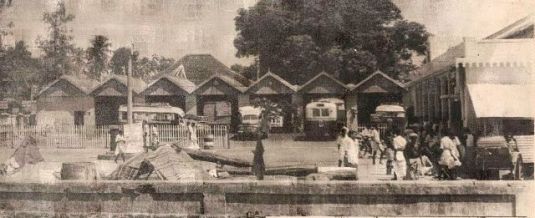
The Ernakulam Boat Jetty circa 1950

Tiruvattur Temple interior
Photograph, taken about 1900 by the Government photographer Zacharias D'Cruz, of the Tirvattar temple in the erstwhile Travancore State.The Adikesava Perumal temple pictured here is considered to be of equal sanctity to that at Trivandrum dedicated to Sri Padmanabha, though it is much older. The God Adikesava is said to have taken his rest at Tiruvattar after having killed an Asura, who had been the cause of immense misery to the world. He is represented as Vishnu seated, in contrast to the lying posture of Sri Padmanabha at Trivandrum. The temple is one of the largest in Travancore and with its large corridors adorned with rows of stone-pillars and excellent sculptures it forms a magnificent piece of ancient Dravidian architecture. It is situated on a high level and flights of steps lead up to its precincts from all sides.
Photograph taken about 1900 by the Government photographer, Zacharias D'Cruz of a general view of the canal at Chakay, Trivandrum. It is one of 76 prints in an album entitled 'Album of South Indian Views' of the Curzon Collection. George Nathaniel Curzon was Under Secretary of State at the Foreign Office between 1895-98 and Viceroy of India between 1898-1905
Chakay

Photograph taken about 1900 by the Government photographer, Zacharias D'Cruz of a general view north from the bridge, Quilon
![View east of the [Golf] Pavilion, No.2 [Trivandrum]](http://ogimages.bl.uk/images/019/019PHO000430S45U00022000[SVC2].jpg)
View east of the [Golf] Pavilion, No.2 [Trivandrum]
Photograph taken about 1900 by the Government photographer, Zacharias D'Cruz of the Golf Links, Trivandrum. It is one of 76 prints in an album entitled 'Album of South Indian Views' from the Curzon Collection. George Nathaniel Curzon was Under Secretary of State at the Foreign Office between 1895-98 and Viceroy of India between 1898-1905.

PICKING
NITS-WAS A DAILY SIGHT IN INDIA-PICKING NITS WAS A SORT OF SOCIAL
GATHERING SIMILAR TO A MODERN WOMEN,S CLUB ;AT THE SAME TIME SAFE FROM
THE CRUEL DICTATORIAL MOTHER INLAW/SISTERINLAW AND HUSBAND

MAKING:-BraidING/ Or WeavING COCNUT Leaves ,FOR THATCHING THE ROOF
Coir Industry Kerala
Crafts demonstration, Kochi

The simplest version is the paddle-wheel in which an operator walks directly on the rim, turning it so that it continuously and steadily scoops up water and deposits it over a low bund, . In its basic form the paddle wheel is not very efficient since a lot of the water lifted flows back around its edges. Therefore an improved version involves encasing the wheel in a closely fitting box which not only reduces the back-leakage of water but also slightly increases the head through which the device can operate.
Paddle wheels have been mechanized in the past, although they are unusual as water lifting devices today.
-

MAKING:-BraidING/ Or WeavING COCNUT Leaves ,FOR THATCHING THE ROOF
Coir Industry Kerala
Crafts demonstration, Kochi

Paddle-wheel or tread-wheel-used to pump out or pump in water into paddy fields,before electricity came to Travancore
These
devices are, in effect, rotary versions of the simple scoop; however
instead of one scoop being moved back and forth, a number are set around
the periphery of a wheel,. Like the scoop a paddle wheel is only useful
for very low lift pumping, such as flooding paddy fields at no more
than about 0.5m height above the water source.The simplest version is the paddle-wheel in which an operator walks directly on the rim, turning it so that it continuously and steadily scoops up water and deposits it over a low bund, . In its basic form the paddle wheel is not very efficient since a lot of the water lifted flows back around its edges. Therefore an improved version involves encasing the wheel in a closely fitting box which not only reduces the back-leakage of water but also slightly increases the head through which the device can operate.
Paddle wheels have been mechanized in the past, although they are unusual as water lifting devices today.
-

TYPICAL
TRAVANCORE CANAL TRANSPORT [THOSE DAYS -THERE WERE NO MOTOR BOATS,
HOUSE BOATS OR TOURISTS; ALL OF WHICH CAME AFTER 1950]
MOST TRADE AND TRAVEL TOOK PLACE BY THESE VALLAMS/BOATS AND IT USED TO TAKE MANY DAYS TO COVER DISTANCES
BUT THERE WERE NO POLLUTION OF AIR NO NOISE POLLUTION, NO ACCIDENTS,NO TENSIONS OF TRAVEL
MOST TRADE AND TRAVEL TOOK PLACE BY THESE VALLAMS/BOATS AND IT USED TO TAKE MANY DAYS TO COVER DISTANCES
BUT THERE WERE NO POLLUTION OF AIR NO NOISE POLLUTION, NO ACCIDENTS,NO TENSIONS OF TRAVEL
BELOW-
DHOOLIE{PALANQUIN} SIMILAR DHOOLIES WERE USED TO TRAVEL FROM MUNDAKAYAM
TO PEERMADE,VANDIPERIYAR AND MUNNAR IN 19TH CENTURY;BEFORE ROADS WERE
MADE
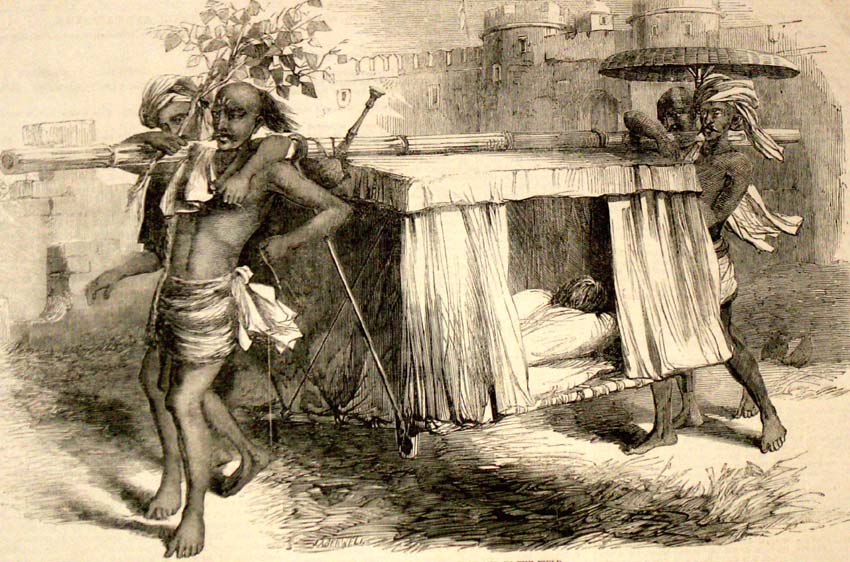

MAHATMA GANDHI IN TRAVANCORE 1937
( MAHATMA Gandhi at vaikom satyagraha)

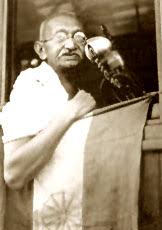

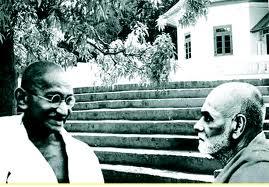
Mahatma Gandhi has visited Kerala five times.:-http://www.spiderkerala.net/resources/4928-GANDHIJI-S-VISITS-TO-KERALA-GANDHIJI-REMEMBERED.aspx
( MAHATMA Gandhi at vaikom satyagraha)


Mahatma Gandhi has visited Kerala five times.:-http://www.spiderkerala.net/resources/4928-GANDHIJI-S-VISITS-TO-KERALA-GANDHIJI-REMEMBERED.aspx
Role of Pathanamthitta in freedom struggle
The district can be proud of its rich contribution to the struggle for freedom.When Mahatma Gandhi visited the erstwhile Travancore in 1937, he asked his follower Khadar Das T.P. Gopala Pillai to spread the message of Khadi and Charka. Inspired by Gandhiji he founded the 'Mahatma Khadi Ashram' at Elanthoor 1941.He launched a scheme for mobilizing funds for khadi activities known as 'ek paise fund' in order to ensure the participation of the whole people in the khadi movement.

Travancore State Congress(23rd February 1938) and Utharavada bharanam [ Responsible government] Struggle
The district can be proud of its rich contribution to the struggle for freedom.When Mahatma Gandhi visited the erstwhile Travancore in 1937, he asked his follower Khadar Das T.P. Gopala Pillai to spread the message of Khadi and Charka. Inspired by Gandhiji he founded the 'Mahatma Khadi Ashram' at Elanthoor 1941.He launched a scheme for mobilizing funds for khadi activities known as 'ek paise fund' in order to ensure the participation of the whole people in the khadi movement.

Travancore State Congress(23rd February 1938) and Utharavada bharanam [ Responsible government] Struggle
PATIOTIC SONGS OF CONGRESS PARTY ; DURING 2ND WORLD WAR 1939-1945 AGAINST BRITISH RULE
subash chandra bose real orginal video and his speech to nation in 1930
Azad Hind soldiers under subhash chandra Bose,marching against British army-2nd world war
click and read:-Battle of Imphal-http://en.wikipedia.org/wiki/Battle_of_Imphal
INA SOLDIERS ENTERED INDIA AT IMPHAL 1944
click and read:-Battle of Imphal-http://en.wikipedia.org/wiki/Battle_of_Imphal
[3]Azad Hind Radio:-http://en.wikipedia.org/wiki/Azad_Hind_Radio
NATIONAL SONG OF INDIAN NATIONAL ARMY UNDER SUBHASH CHANDRA BOSE -1942
click andread]:-SUBHAS CHANDRA BOSE, THE INDIAN NATIONAL ARMY, AND THE WAR OF INDIA'SLIBERATION:--reAD;-HTTP://LIBRARY.FLAWLESSLOGIC.COM/BOSE_2.HTM
clickand listen to MARCHING SONG of bose:
Sare Jahan Se Acha Hindustan Hamara- ://youtu.be/teB0uOfRuZY[This song is by Allama Iqbal- song,0f 1905]

 |
| 100 Rupees note of Azad Hind Bank of India |

BELOW-OTHER PATRIOTIC SONGS OF 1940 ERA SUNG EVERY WHERE FILM Kismet `1943In the patriotic song, Door hato O Duniya walon ("Go away outsiders, India is ours"), penned by 'Kavi Pradeep', a negative reference to Japan was used, Tum na kisike aage jhunkna, German ho ya Japani, this allowed it to get pass through heavy British censorship of the time though the people understood the hidden meaning and the song; backed by the uplifting score by Anil Biswas, it became an instant hit, amidst the atmosphere of rising nationalistic fervour , though the British authorities, soon realised their mistake, and wanted to ban the film, and an arrest warrant was issued for the film's lyricist, Pradeep, who had to immediately go underground, to avoid arrest
(In travancore also i saw this song sung; by a freedom fighter; who jumped on a drama stage and sung but escaped before arrest)
FAMOUS PATRIOTIC SONG OF PRE- INDEPENDENCE STRUGGLE.
[CLICK AND SEE MOVIE -KISMET-1942]http://www.youtube.com/watch?v=7RcFHpxbr9w&feature=
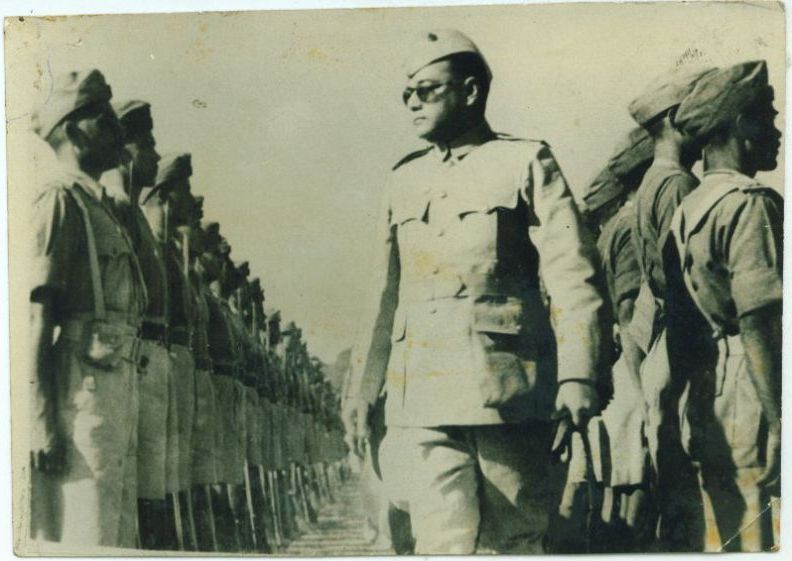
subhash chandra bose taking salute of Azad Hind(INDIAN) soldiers at singapore -1943
INDIAN PATRIOTIC SONG -SUNG ABOUT AZAD HIND (INDIAN)SOLDIERS

SUBHASH CHANDRA BOSE IN SINGAPORE -DURING SECOND WORLD WAR
Chempakaraman Pillai-(September 15, 1891–May 26, 1934)-Kerala born Indian revolutionary;-http://pazhayathu.blogspot.in/2010/08/chempakaraman-pillai-september-15.html
Chempakaraman Pillai-(September 15, 1891–May 26, 1934)-Kerala born Indian revolutionary;-http://pazhayathu.blogspot.in/2010/08/chempakaraman-pillai-september-15.html
below:-
Tryst with Destiny was a speech made by Jawaharlal Nehru, the firstPrime Minister of independent India. The speech was made to theIndian Constituent Assembly, on the eve of India's Independence, towards midnight on 14 August 1947. It focuses on the aspects that transcend India's history. It is considered to be one of the greatest speeches of all time

Founding members-Travancore State Congress

above film:-India News Reel: Final British Soldiers Leaving India
Sardar Vallabhbhai Patel speaks
Travancore State Congress [Working Committee: Pattom A. Thanu Pillai (President); Parur T. K. Narayana Pillai;C. Kesavan; A. J. John, Anaparambil; T. M. Varghese, Thandaneth; K. T. Thomas (Secretary); P. S. Nataraja Pillai (Secretary); P. K. Kunju; K. P. Neelakanta Pillai; M. R. Madhava Warrier; N. K. Padmanabha Pillai; Annie Mascarene; E. John Philipose, Elanjickal; P. J. Sebastian, Pullamkalam; K. M. Korah, Karuvelithara;Kumbalam P. Sanku Pillai;
A. Narayana Pillai; V. K. Velayudhan; K. Kesavan; Kannara Gopala
Panicker; R. Vasudevan Pillai; M. N. Parameswaran Pillai; K. N.
Kunjukrishna Pillai]
Ballot Boxes
VOTE
BOXES OF-'TRAVANCORE COCHIN'--(BEFORE KERALA STATE WAS BORN [1]
P.S.P[PRAJA SOCIALIST PARTY][2] CONGRESS -[BULLOCK SIGN]AND ANOTHER
PARTY SYMBOL OF LIGHTED LAMP--PROBABLY COMMUNIST PARTY WAS NOT VERY
POPULAR AT THAT TIME?--AND THE VOTE GOES INTO P.S.P VOTE BOX--NOW P.S.P
IS EXTINCT
A
hand places a vote into a ballot box during the Travancore-Cochin
elections, Trivandrum, India, March 1954. (Photo by James Burke/Time
Life Pictures/Getty Images)

General elections in Travancore, the first based on universal adult franchise in India (Feb. 1948)Total seats: 120; Indian National Congress: 97; Muslim league: 8; Travancore Tamil Nadu Congress:14; Independents: 1;Communist party: 0.
[THE COMMUNIST PARTY WAS NOT POPULAR THEN AS IT IS NOW-because C.P.I. OPENLY supported AND COLLABORATED WITH BritishIndian rulers during 2Nd world war just because Britain was allied withRussia.TILL RUSSIA JOINED THE SECOND WORLD WAR ;IT WAS CALLEDIMPERIALISTIC WAR BUT THE MOMENT RUSSIA JOINED THE WAR ON BRITISH SIDE ; IT WAS RENAMED AS PEOPLES WAR AND PATRIOTIC WAR BY C.P.I.
whether similar secret arrangements:- Britain had with other minor Indian parties is not known but,R.s.s. the parent party of B.j.p. never took part in India's freedom struggle.;also Jinna's MUSLIM league
never took part in India's freedom struggle .HINDU MAHASABHA NEVER TOOK
PART IN INDIAN INDEPENDANCE STRUGGLE.DRAVIDA KAZAKAM PARTY OF E.V
RAMASWAMI NAICKER (PARENT PARTY OF D.M.K. AND LATER A.I.A..D.M.K.) NEVER
TOOK PART IN INDIAN INDEPENDANCE STRUGGLE.Reasons unknown.
LATER
COMMUNIST PARTY WAS BANNED FOR A SHORT PERIOD FOR TAKING PART IN ARMED
REVOLUTION IN TELENGANA.SIMILARLY R.S.S. WAS BANNED FOR A SHORT PERIOD
AFTER MAHATMA GANDHI'S ASSASSINATION
.DUE TO THESE REASONS BOTH THESE PARTIES WERE NOT POPULAR IN 1950]
RELATED READINGS:-[1]http://www.worldfuturefund.org/wffmaster/Reading/Total/Fascism.India.htm
[2]http://www.sabrang.com/cc/comold/mar00/document.htm
[3]http://www.icl-fi.org/english/wv/970/quitindia.html:
[4]http://mostaqueali.blogspot.com/2009/02/was-jinnah-british-raj-agent.html
[5]http://en.wikipedia.org/wiki/Justice_Party_(India)
RELATED READINGS:-[1]http://www.worldfuturefund.org/wffmaster/Reading/Total/Fascism.India.htm
[2]http://www.sabrang.com/cc/comold/mar00/document.htm
[3]http://www.icl-fi.org/english/wv/970/quitindia.html:
[4]http://mostaqueali.blogspot.com/2009/02/was-jinnah-british-raj-agent.html
[5]http://en.wikipedia.org/wiki/Justice_Party_(India)
First General Elections of India, (10th December 1951 - 5th January 1952): Results for Travancore-CochinState
Total seats: 108; Indian National Congress: 44; Travancore Tamil Nadu Congress (T. T. N. C.): 8;Socialist Party: 11; Communist Party: 25; Revolutionary Socialist Party: 6; Kerala Socialist Party: 1; Cochin party: 1; Independents: 12

A. J. JOHN,
ELECTION AS LEADER OF THE CONGRESS LEGISLATURE PARTY (44 LEGISLATORS), DEFEATING PANAMPILLY GOVINDA MENON BY A MARGIN OF 2 VOTESA. J. JOHN INVITED BY THE RAJPRAMUKH TO FORM THE GOVERNMENT AS LEADER OF THE LARGEST SINGLE PARTY IN THE LEGISLATURE
T. T. N. C. (8 legislators under A. Chidambaranatha Nadar) offers support to the Congress in forming a coalition government. (57 vs. 51 among 108 legislators)
Cabinet: T. M. Varghese, (Home Affairs);
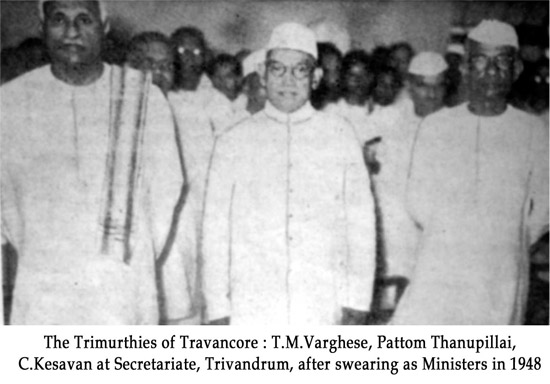
Panampilly Govinda Menon (Finance, Civil Supplies)
Kalathil Velayudhan Nair (Public Works, Transport, Electricity)

V. Madhavan (Medicine, Public Health); K. Kchukuttan (Local self-government); A. Chidambaranatha Nadar (Land revenue, Fo
Total seats: 118; Indian National Congress: 45; Travancore Tamil Nadu Congress (T. T. N. C.): 12;Praja Socialist Party: 19; Communist Party: 23;Revolutionary Socialist Party: 9; Kerala Socialist Party: 3; Independents: 6;
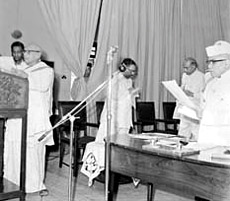
HISTORY OF P.S.P PARTY :-
| Political offices | ||
|---|---|---|
| Preceded by none | Prime Minister of Travancore 1948– 1948[PATTOM.A.THANU PILLAI] | Succeeded by Parur T. K. Narayana Pillai |
| Preceded by A. J. John, Anaparambil | Chief Minister of Travancore-Cochin 1954– 1955 | Succeeded by Panampilly Govinda Menon |
| Preceded by E. M. S. Namboodiripad | Chief Minister of Kerala 1960– 1962 | Succeeded by R. Sankar |
His
actual name was A. Thanu Pillai. Since he came from Pattom in
Thiruvananthapuram, he was called Pattom Thanu Pillai. Popularly he was
known as just "Pattom".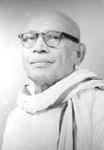
. He
obtained a degree in law and started legal practise.After some days he
gave up the practise and joined the Indian National Congress.He atively
took part in the independence movement .Within a few days he became a
good leader of the congress party.He was given the responsibility to
lead the congress party in the princely state of Travancore. In 1946 he
was appointed as the member of the constituent assembly of India.
Pattom A. Thanu Pillai played crucial role in drafting the constitution of India.After independence he was appointed as the prime minister of Travancore.
Pattom A. Thanu Pillai played crucial role in drafting the constitution of India.After independence he was appointed as the prime minister of Travancore.
The struggle for a responsible government in the princely state culminated in the ousting of theDiwan,Sir C.P. Ramaswami Iyer.
Sir C.P. left Travancore on 19 August 1947. After Indian Independence
and before the formation of Kerala state in 1956, he became Prime
Minister of Travancorefrom 24 March 1948 to 22 October 1948. After independence, the princely states of Travancore andCochin were amalgamated to form Travancore-CochinState on 1 July 1949.
As a PSP member Pillai became Chief Minister ofThiru-Kochi (or Travancore-Cochin) from 16 March 1954 to 14 February 1955. The State of Kerala was formed on 1 November 1956 and the first state elections held there in March 1957 and resulted in a Communist Party-led administration. Pillai was an MLA for Thiruvananthapuram II representing the PSP.
When the first Kerala administration fell in the onslaught of "Vimochana Samaram"
(Liberation Struggle) against the Communist rule and after elections in
1960 Pillai became the second Chief Minister of Kerala as head of a
coalition administration. He was in power from 22 February 1960 to 26
September 1962. In 1962, he became the Governor of Punjab. Later he was
appointed the Governor of Andhra Pradesh in which role he served from 4 May 1964 until 11 April 1968.
During the Travancore-Cochin elections, while people watch a play. {NINGAL ENNE COMMUNISTAKKI?-- BEFORE MANY PEOPLE BECAME COMMUNISTS IN 1950'S}
click and listen to 'Ningal enne communistakki'-1952 [MALAYALAM DRAMA]:->
Kerala People's Arts Club (KPAC) was formed in 1950.It was a cultural organisation with a political purpose, The brainchild of a group of youngsters - G. Janardhana Kurup, N. Rajagopalan Nair and K.S. Rajamani - associated with the CPI;
It
was with "Ningalenne Communistakki" (You Made Me a Communist, 1952),
its second play, that KPAC became a force to reckon with on Kerala's
cultural scene.Thoppil Bhasi, a young Communist activist wrote the play under the pseudonym Soman. most of the members of the group had little or no prior stage experience,After the first show itself the play was booked for 36 performances. Overnight, an amateur play became professional,,Ningalenne Communistakki" made history in Malayalam theatre by becoming the first play to be staged more than 10,000 times
Gifted
artists such as KPAC Sulochana, K.S. George, G. Devarajan, M.S.
Baburaj, K. Raghavan Master, P.J. Antony, Kambissery Karunakaran, K.P.
Ummer and KPAC Lalitha and poets such as O.N.V. Kurup and Vayalar Rama
Varma, to name a few, were either associated with the KPAC or began
their career in it.golden jubilee celebrations of KPAC were inaugurated in May 2000
This drama propelled KPAC into the forefront of kerala cultural scene and played a historical role in popularising the Communist movement in Kerala during 1950's

IN THE ABOVE VIDEO OF A STREET DEMONSTRATION NEAR TRIVANDRUM MUSEUM;
ONE CAN SEE THE OLD COSTLY IMPORTED ,GLOBE SHAPED STREET LAMPS; PUT FROM PALAYAM TO KOWDIAR IN 1940'S;BY THE MAHARAJA. BUT ALL THESE STREET LAMPS WERE STONED TO PIECES BY SOME POLITICAL PARTY AGITATING FOR SOME INSIGNIFICANT CAUSE IN 1960'S .PUBLIC PROPERTY ISCOMMON MAN'S PROPERTY.THIS ALL POLITICAL PARTIES MUST REMEMBER .THOSE PARTIES WHICH DESTROY OUR PROPERTY SHOULD PAY BACK THE COST ;TO THE GOVERNMENT .
eventually leading to the establishment of first democratically elected communist ministry in The World in 1957 in Kerala under E. M. S. Namboodiripad.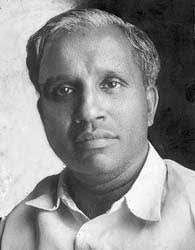
[other reasons for communist win were :- common man got upset by instability;with many short lived
cong: ministries ,many times central rule ;corruption charges against
some ministers;semi famine condition;severe un employment;poverty among
the workers; agriculture workers;small scale agriculturists;'paatta
krishi' agriculture arrangement ;UNHAPPY DALITS ]

CLICK AND LISTEN TO KPAC SONGS:-http://www.devaragam.com/vbscript/WimpyPlayer_ext.aspx?ord=d&var=7831,795,796,794
kpac drama music -www.devaragam.com
http://www.devaragam.com/vbscript/WimpyPlayer_ext.aspx?rd=d&var=13460,13457,13459,794,795,7829,7830,13455,13453,11963,796,11905,812,813,816,13452,7831,12077,7832,12066,12067,12068,12069,12070,12071,12072,12073,12074,12075,12076,814,797,13454,13449,6503,13461,799,7816,13451,7828,7827,798,815,13456
During the Travancore-Cochin elections,



communist workers climbing up a flag post

munistpropaganda(vimochana samaram)
Poverty stricken farmers pulling an ancient plow through rice field-DAILY WAGES WERE JUST 4 ANNAS=25 PAISE=1/4 RUPEE/DAY''ELLU MURIYE PANI CHEYTHAL PALLU MURIYE THINNAAM''(IF YOU WORK HARD YOU GET ENOUGH FOOD) WAS A SAYING OF THAT TIMES
Poverty stricken farmers pulling an ancient plow through rice field. (Photo by James Whitmore//Time Life Pictures/Getty Images)Apr 1, 1957





Flight with history:
The protagonists of the accession drama, the Travancore raja and Sardar Patel, aboard a Devon plane in '50.[Travancore was in half mind to remain as free country without joining India]MAY BE SARDAR PATEL'S FIRM WORDS CHANGED THE MIND OF THE MAHARAJA AND TRAVANCORE FINALLY JOINED THE INDIAN UNION
[The present state of Kerala is made up of three princely states, Travancore, Cochin and Malabar. When the British announced their withdrawal from India, the Diwan of Travancore, Sir. CP Ramaswamy Iyer announced that Travancore would establish itself as an independent state and would not join the Indian Union.
bY.
The action of Diwan aroused a bitter controversy inside and outside the
State. Travancore was again in the vortex of a political struggle and
the Government resorted to a series of repressive measures to meet the
situation. One of the highlights of the struggle was a police firing at
Pettah, Trivandrum, in which three persons including a student by name
Rajendran were killed. A few days after the incident, an unsuccessful
attempt was made on SirC.P.Ramaswamy
Iyer’s life when the Diwan was attending a function in the Swathi
Thirunal Academy of Music at Trivandrum (July 25, 1947). The Diwan
escaped with minor injuries and very soon left the State for good.
Immediately after this incident the Maharaja intimated, to Lord
Mountbatten, the Governor-General, his decision to accept the Instrument
of Accession and take Travancore into the Indian Union. SirC.P. Ramaswamy Iyer resigned the office of Diwan on August 19, 1947 and was succeeded in that office by P.G.N. Unnithan.]


BELOW:-
Medical
College,Thiruvananthapuramwas founded in 1951, and was inaugurated by
Jawaharlal Nehru, the first prime minister of India. at 8:00 AM on 27th Nov. 1951. This is the first ,oldest ,and most prestigious medical college in Kerala.


Nehru at palayam,Thiruananthapuram stadium 1960'S.just to see Nehru and listen to him ;the stadium was overflowing with crowd
 |
| THIRUANANTHA PURAM ,PALAYAM POLICE STADIUM ALSO KNOWN AS CHANDRASEKHARAN NAIR STADIUM WAS THE NAIR PATTALAM(SOLDIER'S)PARADE GROUND FROM 1850 ON WARDS CAN SEE ABOVE :- THE OLD KERALA ARCHITECTURE TILED MOSQUE OF PALAYAM ;BEFORE THE NEW MOSQUE WITH MINARET WAS BUILT;AS SEEN BELOW 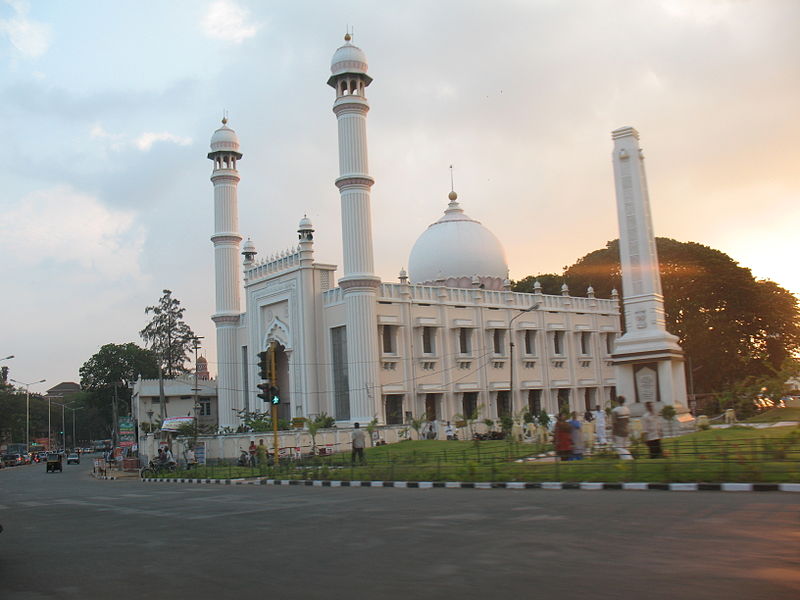 |
1708-WAR ON PEPPERCOAST{KERALA/MALABAR}A battle on the Malabar Coast ("Pepper Coast") between the Dutch East India Company and the Portutuese, with "Nairos," Dec. 1661; Dutch ships are in the background; from 'Wouter Schouten's travels into the East Indies', 2nd ed., Amsterdam, 1708
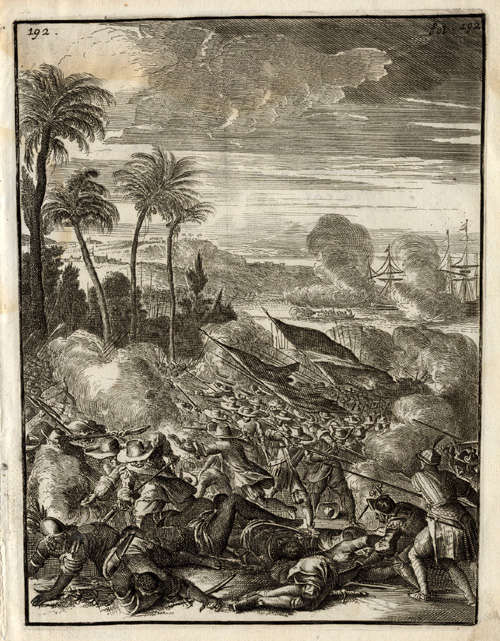
A Malabar man(kerala) Showing tricks with Serpents* 1660'S
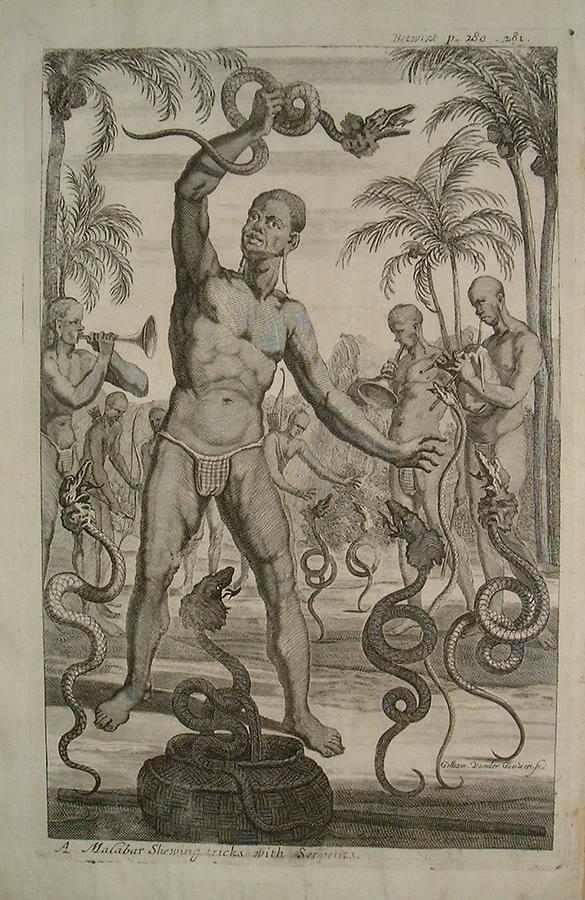
A Malabar[KERALA] Man and Woman* 1660

Queen of Koylang [Quilon] 1662,[NOW KNOWN AS KOLLAM TOWN]


Description of Umayamma Rani
The Dutch representative William Van Nieuhoff describes the Rani as:
| “ | ... I was introduced into her majesty's presence. She had a guard of above 700 Nair soldiers about her, all clad after the Malabar fashion; the Queens attire being no more than a piece of callicoe wrapt around her middle, the upper part of her body appearing for the most part naked, with a piece of callicoe hanging carelessly round her shoulders. Her ears, which were very long, her neck and arms were adorned with precious stones, gold rings and bracelets and her head covered with a piece of white callicoe. She was past her middle age, of a brown complexion, with black hair tied in a knot behind, but of majestick mein, she being a princess who shew'd a great deal of good conduct in the management of her affairs [15] | ” |
Umayamma Rani
Born: - Died: 1705 | ||
| Regnal titles | ||
|---|---|---|
| Preceded by Rajah Aditya Varma | Rani of Venad, Attingal Mootha Thampuran 1677-1684 | Succeeded by Rajah Ravi Varma |
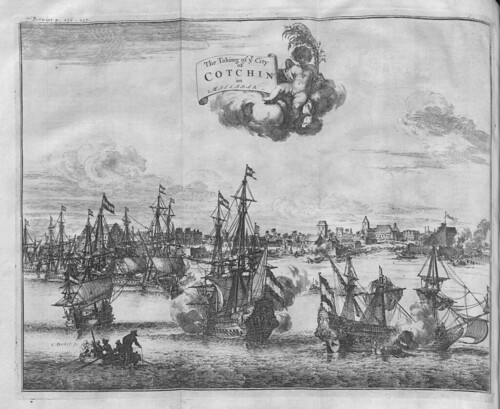
The Taking (CAPTURING FROM PORTUGUESE BY THE DUTCH) of Ye City of Cotchin (COCHI) in Mallabar-[YEAR 1640-BY NIEUHOF]

Plan of the Fortress of Coylan[QUILON =KOLLAM]. Located on the Malabar coast of India. The Dutch East India Company captured it from the Portuguese in 1661. Also known as Quilon. Copper plate engraving, hand coloured, from Abbe Prevost's Historical Travels, 1747.
1805-THE MAHARAJAH OF TRAVANCORE PRESENTING GOLD CROWN FOR THE TORAH

1905-FIRST SEVEN INDIAN NURSES WITH IDA SCUDDER VELLORE


The HinduPrime Minister Indira Gandhi being received by Chief Minister Karunakaran in Trivandrum on January

MANNATHU PADMANABHAN WITH NEHRU AND INDIRA GANDHI



 Mannam. KM Munshi,Panambilly | |
 Mannam and K.Kelappan | |
 Mannam, Pattom Thanu Pillai, KPS Menon, G Ramachandran |
 |
Prime Minister Pandit Jawaharlal Nehru being greeted by leader of the Nair service society, Mannath Padmanabhan (left) at Trivandrum airport in Kerala on June 25, 1959.
C.KESAVAN WITH JAWAHARLAL NEHRU
|
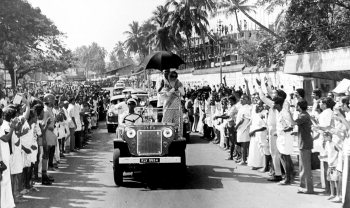
The
Prime Minister, Mrs. Indira Gandhi greeted by the people of Trivandrum
who had thronged on the roadside during her visit to the State capita on
January 17, 1980. She and her party won the Lok Sabha election as she
was sworn in PM on January 14, 1980.

BEFORE HIGH WAYS AND MAIN CENTRAL (M.C.)ROAD WERE MADE ,THIS WAS THE ONLY MODE OF TRAVEL AND TRADE
Raja Kesavadas (1745-1799)constructed the Main Central Road (now State Highway No.1) from ThiruvananthapuramtoKarukutty, near Angamaly which is still the main road in thehinterland areas of Kerala. The originating junction of this road - Kesavadasapuram  - is derived from his name
- is derived from his name
Kayangulam [Kayankulam]--Photographer: D'Cruz, Zachariah Medium: Photographic print Date: 1900
![Kayangulam [Kayankulam]](http://ogimages.bl.uk/images/019/019PHO000430S45U00041000%5BSVC2%5D.jpg)
1878
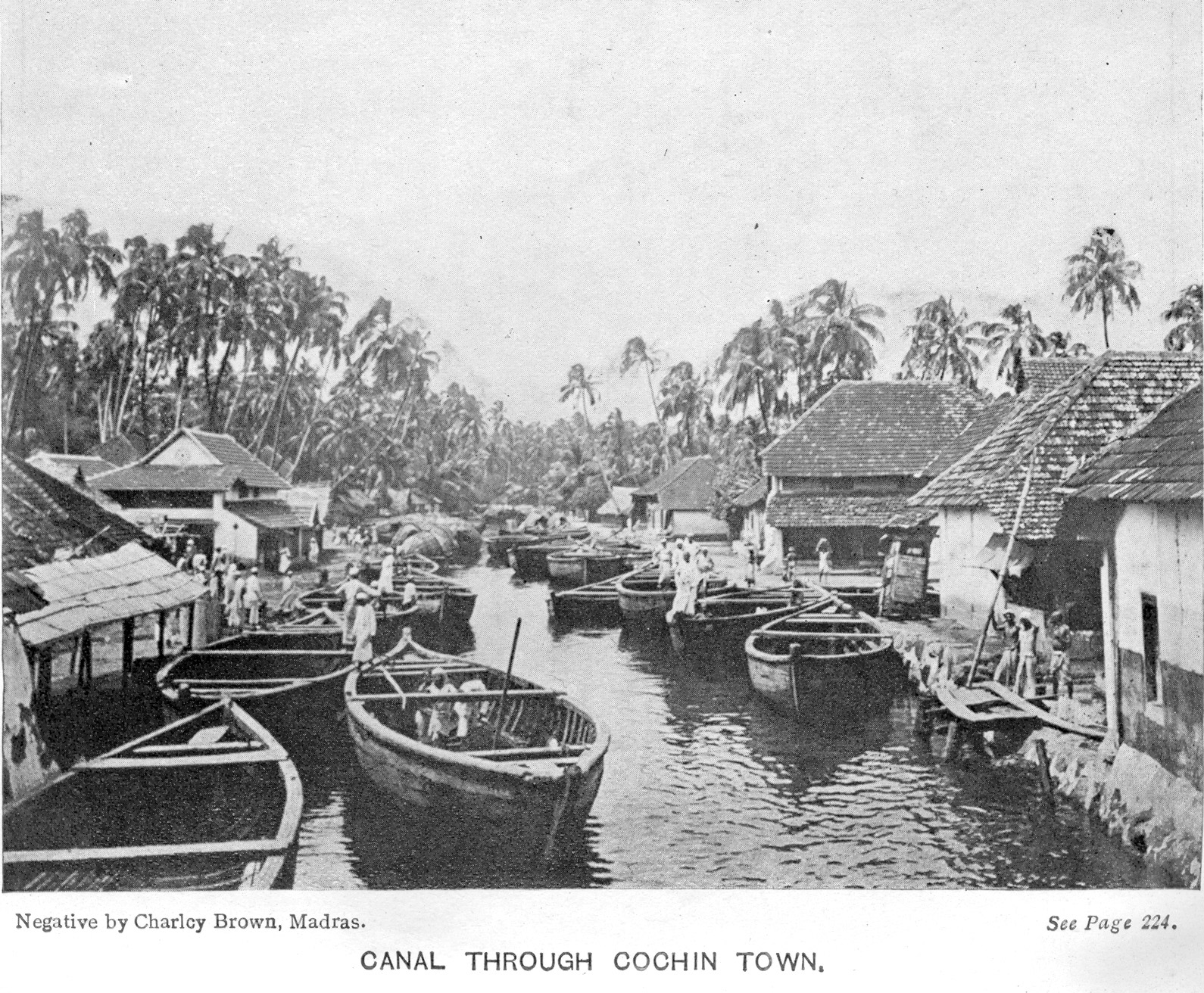
 |
In her autobiography, 'Recollections of a happy life' of 1892, she wrote, "At Beypore I found a large room over the station, a hundred yards from the sea, with a garden between me and it...I enjoyed being at Beypur close to the sea...I could walk on the rocks and sands, watching the shrimps, crabs...I made a long sketch of the river and distant mountains, with endless cocoa-nuts in the middle distance, ferry-boats, and picturesque people. It was very pleasant sitting on the clean sand, but it was hot."

Water-colour
painting of the town and harbour of Kannur (Cannanore) by John Johnson
(c.1769-1846), c.1795 - 1801. This image is from a sketch-book of 36
drawings (36 folios) depicting scenes chiefly in west India and Mysore
(Karnataka) between c.1795-1801.
Kannur
is situated on a headland overlooking a picturesque bay in Kerala, in
the south of India. Vasco da Gama (1460-1524) the Portuguese explorer
who discovered an ocean route from Portugal to the East came to this
area in 1498 and it subsequently became an important trading station.
The fort of St. Angelo was constructed in 1505 by the first Portuguese
Viceroy Don Francisco De Almeda with the consent of the ruling Kolathiri
Raja. In 1656 the Dutch expelled the Portuguese and subsequently sold
the town to a Moplah family (a community of Arab descent) who claimed
sovereignty over the Laccadive Islands, a group of coral reefs and
islands off the coast of Kerala. Moplah rule was terminated by the
British who attacked and captured Kannur in 1790 and it became their
most important military base in the south of India. The barracks,
arsenal, cannons and the ruins of a chapel still stand in the fort as a
testimony to its glorious history.

Attack on Kollam in December 1661.

Attack on Kollam in December 1661.

Aquatint published by F. Jukes in 1794 and part of King George III's Topographical Collection, with a view of an island fort of Tipu Sultan on the Malabar Coast in southern India. It is one of the forts which was ceded to the British during the Third Anglo-Mysore War (1789-92). Tipu Sultan (b.1750-d.1799), was the strong and capable ruler of Mysore who consistently opposed the British as they expanded their control over India. The bitter struggle between the two powers was played out through the Anglo-Mysore Wars and only ended in the Fourth Anglo-Mysore War of 1799, when Tipu was defeated and died fighting while his capital Seringapatam (Srirangapattana) fell to the British.

150 × 150 | Palakkad Fort |

Water-colour
painting of Tellicherry from the island of Darmadam, or Darmapattam, by
an unknown artist, c.1790. The inscription, overwritten on the reverse
reads: 'Tellicherry from Durmapatam. Hills round Mahe. Charles Point.
P[...] Church. Telly Fort House. Ghauts Calick Wells. A Bungalow built
by Mr Falconer. Cochin Cundy Fort ditto by Mr Bailie. Codoly Fort. The
entrance to the Dumapm & Codoly rivers'.
Tellicherry,
founded in 1683, was the first regular settlement on the Malabar coast.
The fort was completed in 1708 by the Kolattiri Rajah and handed to the
East India Company for the protection of their factory. In 1776 the
factory was reduced to a Residency and in 1794 the factory was abolished
by Sir John Shore. It has not been possible to identify Falconer and
Bailie with certainty; an Alexander Falconer was in the Madras Civil
Service at this period.

TALASSERY[TELLICHERRY] TOWN

Engraving by Pieter Schenk (1645-1715) of Cochin in Kerala, published by the artist in his 'Totius orbis Terrarum oppida nobiliora centum Amsterdam' of 1702.

View
of the dam, Periyar Lake taken by an unknown photographer in the 1900s.
The photograph is part of an album containing views of various
locations in India, formerly in the collection of Horatio Kitchener, 1st
Earl Kitchener of Khartoum and Broome, (1850-1916), who was Commander
in Chief of India between 1902 and 1909.(a picture of the Mullaperiyar dam here)
MULLA PERIYAR DAM UNDER CONSTRUCTION
Kollam Residency Office of British Resident to Cochin & Travancore KingdomS
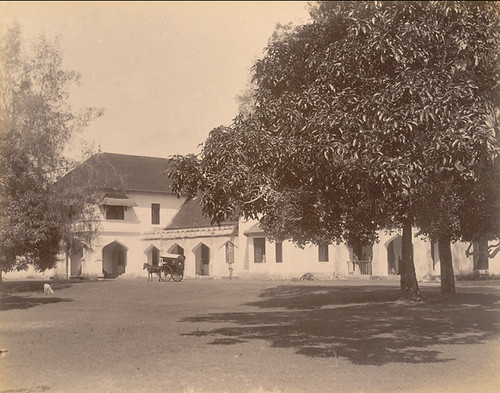
The Trivandrum Golf Club- Commonwealth's second oldest Golf club
[above two pictures]Anchuthengu Fort or Anjengo
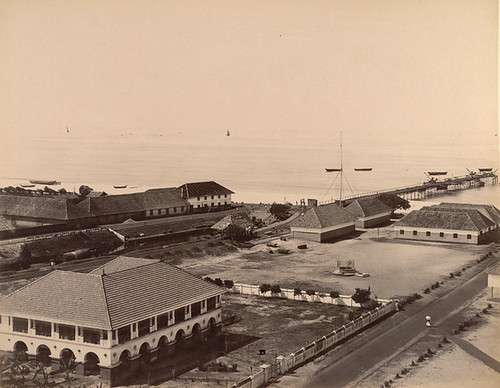
T
Alleppy Port, which was Travancore primary port, before development of Kochi Port.
Raja Kesavadas (1745-1799)s considered as the chief architect of Alapuzha town. The area which Alapuzha now occupies was once a coastal area which was uninhabited and filled with large weeded plants.He found Alapuzha to be a good location for a port. He constructed two parallel canals for bringing goods to the port. For the building of Alapuzha town he was ably assisted by one of his ministers, viz. Thachil Matthoo Tharakan.. Raja Kesavadas offered infrastructural facilities to merchants and traders from Surat, Mumbai and Kachchh to start industrial enterprises, trading and cargo centres. Alappuzha attained progress and became the financial nerve centre of Travancore during his time.
Alleppey Lighthouse--Photographer: D'Cruz, Zachariah Medium: Photographic print Date: 1900
The HQ of Travancore Royal Nair Army.
Photograph
taken about 1900 by the Government photographer, Zacharias D'Cruz of a
view of the Adoption Durbar, Trivandrum. It is one of 76 prints in an
album entitled 'Album of South Indian Views' of the Curzon Collection.
George Nathaniel Curzon was Under Secretary of State at the Foreign
Office between 1895-98 and Viceroy of India between 1898-1905. The State
troops at the Adoption Durbar can be seen here on parade during the
ceremony.
This
image falls into the public domain as it was taken in India prior to 1
January 1951, and was not published in India after that date. It is in
public domain in the United States as well as it was taken prior to 1
January 1951.
DURBAR OF THE RAJAH OF TRAVANCORE c.1856-KERALA
... Painting - Portrait of Travancore Maharaja Moolam Thirunal Rama Varma

In
AD 1849, the Madras government informed the Maharajah, HH Uthram
Thirunal Marthanda Varma, of the conducting of a great exhibition in
London and requested His Highness’s government to make suitable
contributions. The Maharajah, ordered a committee to be formed for this
for which,Maj.Gen Cullen, the Resident, Dr.Paterson, the Durbar
Physician, Mr.Kohlhoff, a judge of appeal court, and Ramen Menon, the
Dewan Peishcar, were the members. P.Shangoonny Menon was the secretary
to the committee.
An ivory state chair in the shape of a throne, reflecting the craftsmanship of the Travancore artisans, was already under construction for the Maharajah’ use and at this juncture it was thought a fit present to be sent for the Great Exhibition. The Maharajah also desired that once the exhibition was over, the throne be accepted by the Queen Victoria as a token of HH’s regards and esteem. This was fully appreciated by the Resident, Major General Cullen and the Madras Government. Accordingly, the beautiful throne along with many carvings reflecting the Travancore workmanship was sent to England along with the following letter to Her Majesty.
An ivory state chair in the shape of a throne, reflecting the craftsmanship of the Travancore artisans, was already under construction for the Maharajah’ use and at this juncture it was thought a fit present to be sent for the Great Exhibition. The Maharajah also desired that once the exhibition was over, the throne be accepted by the Queen Victoria as a token of HH’s regards and esteem. This was fully appreciated by the Resident, Major General Cullen and the Madras Government. Accordingly, the beautiful throne along with many carvings reflecting the Travancore workmanship was sent to England along with the following letter to Her Majesty.
 Engraving of the ivory state chair
Engraving of the ivory state chair
To
Her Most Excellent Majesty Alexandrina Victoria
From
HH Sree Padmanabha Dasa Vanchipala Marthanda Vurmah
MAY IT PLEASE YOUR MAJESTY
“Major General Cullen, the British Resident at my court, and my valued friend and adviser, having conveyed to me a communication, from the Court of Directors of the East India Company, through the Government of Madras, intimating that Your Majesty had been pleased to appoint certain learned and eminent gentlemen as Commissioners for carrying out a project formed at the instance and under the distinguished patronage of Your Majesty’s Royal Consort His Royal Highness Prince Albert, for the collection and exposition in Your Majesty’s city of London, in the ensuing year 1851 of the specimens of produce , manufactures and arts of all countries and nations , and awarding prizes to the most approved productions, and requesting the cooperation and aid of my government in the promotion of this most laudable and important object by collecting and forwarding to the said exhibition, specimens of articles from my country, I have given the most particular instructions to my Dewan for the furnishing of the choicest and most useful and interesting of the productions , which instructions are now being executed with all care and expedition, under the immediate direction of my friend Major General W.Cullen
The transmission of articles from this country for the exhibition, has afforded me an opportunity of which I am anxious to avail myself of forwarding also to London a chair of State , made of ivory, carved and ornamented, the production wholly of the native artists of my country and which I request permission to offer for Your Majesty’s acceptance , as a curiosity, and at the same time as a slight token of my profound respect for Your Majesty’s exalted person and for the numerous and great virtues for which Your Majesty is eminently distinguished.
I beg Your Majesty will graciously condescend to receive this friendly, but humble, tribute, from the Native Prince of a country situated at the very southern extremity of Your Majesty’s vast Indian Empire, who is, as everyone of his predecessors has always been a faithful ally and dependent of the British Government, which on its part, has ever extended to us, its protection and favour, a relation which I humbly trust, will continue to the end of time. And wishing Your Majesty a long happy reign and Your Majesty’s Royal Consort, and all the members of Your Majesty’s illustrious family long life and happiness.
I beg to subscribe myself Your Majesty’s most devoted faithful friend and servant.”
Trevandrum Palace, 11th October 1850.
The state chair in ivory was prominently exhibited in the Crystal Palace, London and it won great acclaim for its beauty, elegance and workmanship. No doubt, Her Majesty was most pleased to accept the gift from the Maharajah after the exhibition.
Her Most Excellent Majesty Alexandrina Victoria
From
HH Sree Padmanabha Dasa Vanchipala Marthanda Vurmah
MAY IT PLEASE YOUR MAJESTY
“Major General Cullen, the British Resident at my court, and my valued friend and adviser, having conveyed to me a communication, from the Court of Directors of the East India Company, through the Government of Madras, intimating that Your Majesty had been pleased to appoint certain learned and eminent gentlemen as Commissioners for carrying out a project formed at the instance and under the distinguished patronage of Your Majesty’s Royal Consort His Royal Highness Prince Albert, for the collection and exposition in Your Majesty’s city of London, in the ensuing year 1851 of the specimens of produce , manufactures and arts of all countries and nations , and awarding prizes to the most approved productions, and requesting the cooperation and aid of my government in the promotion of this most laudable and important object by collecting and forwarding to the said exhibition, specimens of articles from my country, I have given the most particular instructions to my Dewan for the furnishing of the choicest and most useful and interesting of the productions , which instructions are now being executed with all care and expedition, under the immediate direction of my friend Major General W.Cullen
The transmission of articles from this country for the exhibition, has afforded me an opportunity of which I am anxious to avail myself of forwarding also to London a chair of State , made of ivory, carved and ornamented, the production wholly of the native artists of my country and which I request permission to offer for Your Majesty’s acceptance , as a curiosity, and at the same time as a slight token of my profound respect for Your Majesty’s exalted person and for the numerous and great virtues for which Your Majesty is eminently distinguished.
I beg Your Majesty will graciously condescend to receive this friendly, but humble, tribute, from the Native Prince of a country situated at the very southern extremity of Your Majesty’s vast Indian Empire, who is, as everyone of his predecessors has always been a faithful ally and dependent of the British Government, which on its part, has ever extended to us, its protection and favour, a relation which I humbly trust, will continue to the end of time. And wishing Your Majesty a long happy reign and Your Majesty’s Royal Consort, and all the members of Your Majesty’s illustrious family long life and happiness.
I beg to subscribe myself Your Majesty’s most devoted faithful friend and servant.”
Trevandrum Palace, 11th October 1850.
The state chair in ivory was prominently exhibited in the Crystal Palace, London and it won great acclaim for its beauty, elegance and workmanship. No doubt, Her Majesty was most pleased to accept the gift from the Maharajah after the exhibition.
The Elephants of Raja of Travancore, May 1841.
MAHARAJA OF TRVANCORE-
Lithograph of the Raja of Tranvancore's elephants at Trivandrum in Kerala by L.H. de Rudder (1807-1881) after an original drawing of May 1841 by Prince Aleksandr Mikhailovich Saltuikov published in 1848. Prince Saltuikov visited Trivandrum in August 1841 and noted several details about his meeting with the Hindu Maharaja of Travancore. He wrote that the Raja received his guest on his throne, was not more than 25 or 27 years of age and gave his guest two Indian drawings.
Calicut, the Coast of Malabar-KERALA 1813
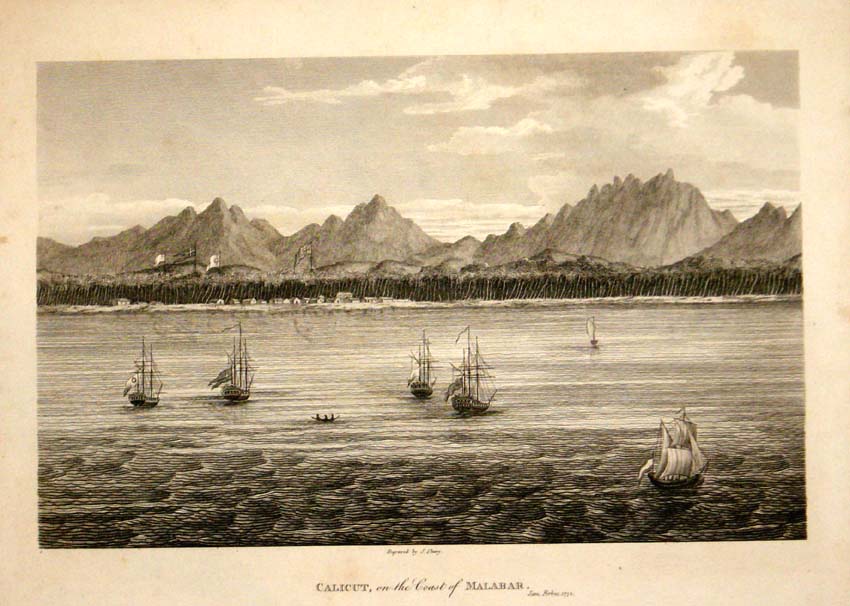

'





old map of Travancore.
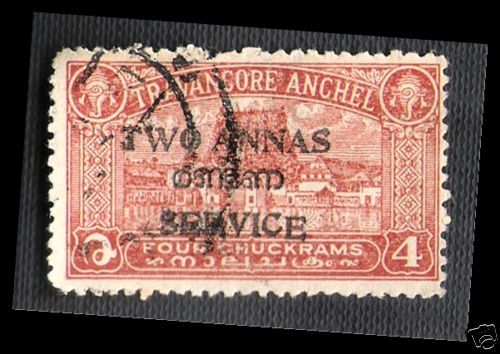
calicut,Mananchira Pond-kerala

 |
\Painting by Raja Ravi Varma depictingRichard Temple-Grenville, 3rd Duke of Buckingham and Chandos being greeted byVisakham Thirunal, with Ayilyam Thirunal of Travancore looking on, during Buckingham's visit to Trivandrum, Travancore in early 1880.![[Illustrated+London+News+of+5th+August+1854+about+Opening+of+a+bridge+at+Travancore2.JPG]](https://blogger.googleusercontent.com/img/b/R29vZ2xl/AVvXsEhZnoHO6l7haHI9J41DT_51Nq1fjTZ3N1A_RYMkBx1_NJxQxRmsae4r1OA30ru6s3fnaDwRf7QzlDz6Dl4us8ixa5-L41wdWDNCj5laljEPzyOI6a1islviLFrJclnfSUfRdGMXCA4R2rVN/s1600/Illustrated+London+News+of+5th+August+1854+about+Opening+of+a+bridge+at+Travancore2.JPG)  |
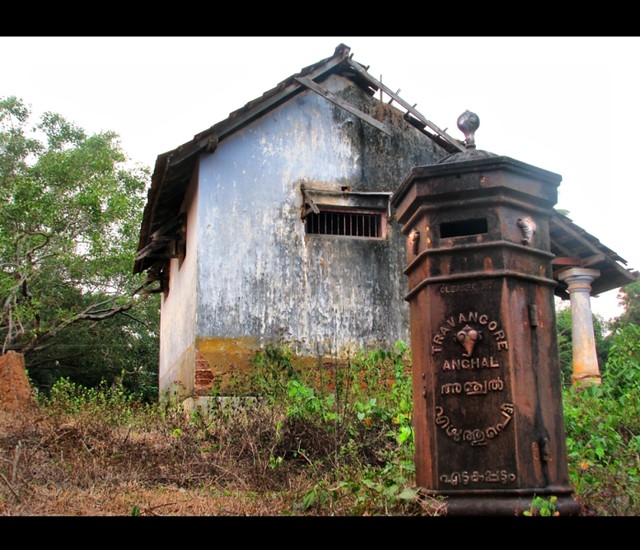 |
| TRAVANCORE STATE ANCHAL(POST) BOX |




old map of Travancore.

TRAVANCORE MAHARAJA'SROLLS ROYCE CAR 1935

Milne Collection
:SECOND FILM SHOWS MAHARAJA CHITHIRA THIRUNAL [His Highness 'Padmanabha Dasa' Sree Chithira Thirunal Balarama Varma Maharaja(November 7, 1912–July 19, 1991) was the last rulingmaharaja of the princely state]
of Travancore.
Click on an image to view the film
.
 | Film 1: B&W. 13:29min. Travancore, (Kerala), India. c. 1930s. Tea plantations. 13:29min. Travancore, (Kerala), India. c. 1930s. Unidentified filmmaker. Tea plantations. Tea boxes transported by
cable railway (wire shoots) across a mountainous area ( the High Ranges bordering Munnar town).
Aerial views of the tea plantations filmed form the cable railway. Outdoor and indoor scenes of the tea factory and workers.
arge number of Indian workers repairing and pulling a set of heavy cable
|
 | Film 2: B&W. 16:13min. Travancore, (Kerala), India. c. 1935. Maharaja of Travancore visiting Nullantani all-electric tea factory. The opening of the Neriamangalam Bridge. |
 | Film 3: B&W. 33:01min. Travancore, (Kerala), India. c. 1930s. Tea plantations and tea production technology. Lumbering in South India |






Musings from Antique Origins:-http://muralirvarma.blogspot.in/2008/03/travancore-and-great-exhibition-of.html

-Sankaran Namboodripad
PUTTING UP NAMES OF THOSE ARRESTED IN THE AGITATION

Students celebrate victory over red gov'Students celebrate victory over red gov't. (Photo by James Burke//Time Life Pictures/Getty Images)Aug 1, 1958
below-Sankaran Namboodripad;Jyoti Basu;Bhupesh Gupta
Chief
Minister E.M. S. Namboodiripad and Communist cabinet members leaving
capital offices for lunch. (Photo by James Whitmore//Time Life
Pictures/Getty Images)
Apr 1, 1957


Date taken: August 1958. Photographer: James Burke.

Students celebrate victory over red gov'Students celebrate victory over red gov't. (Photo by James Burke//Time Life Pictures/Getty Images)Aug 1, 1958
below-Sankaran Namboodripad;Jyoti Basu;Bhupesh Gupta
(L
to R) Jyoti Basu, Bhupesh Gupta, and Sankaran Namboodripad, during a
meeting of Indian Communist Central Exec. Committee members. (Photo by
James Burke//Time Life Pictures/Getty Images) Motor boat unions sends 5 men daily to picket red gov't offices. (Photo by James Burke//Time Life Pictures/Getty Images)Aug 1, 1958








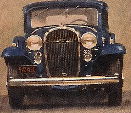





















 536
kg of gold coins: 16 kg each of East India Company sovereigns and
Travancore gold coins, 106 kg of Travancore Raasi coins and 3 kg of
Napolean-era gold coins.
536
kg of gold coins: 16 kg each of East India Company sovereigns and
Travancore gold coins, 106 kg of Travancore Raasi coins and 3 kg of
Napolean-era gold coins.













![Jubilee Town Hall [Trivandrum]](http://ogimages.bl.uk/images/019/019PHO000430S45U00008000[SVC2].jpg)
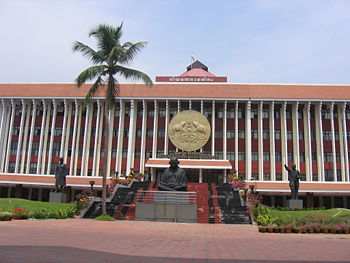

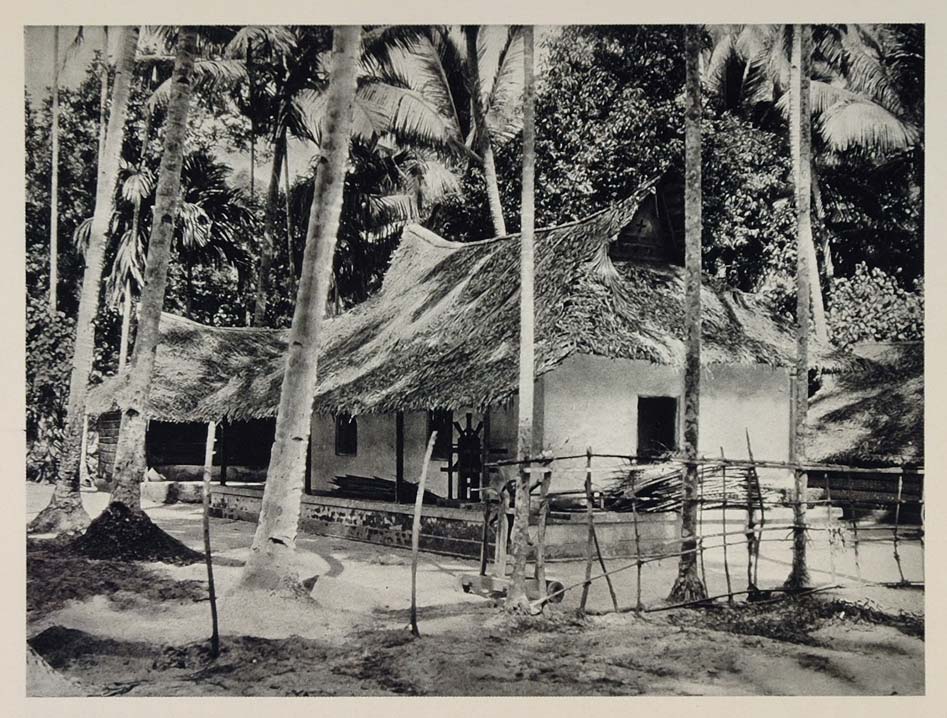






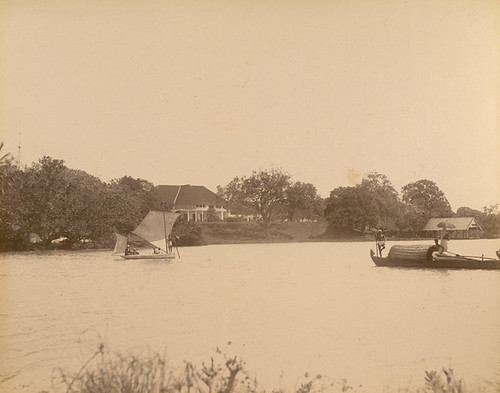
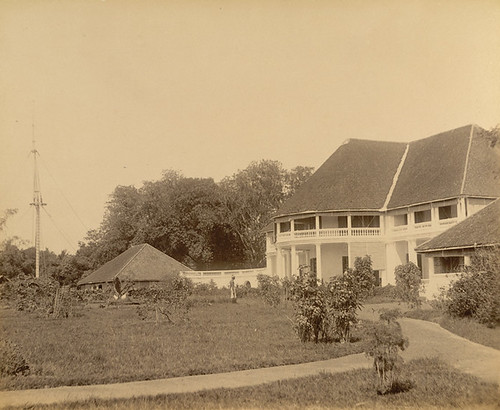
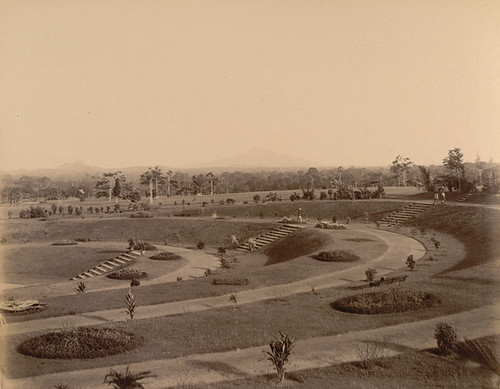








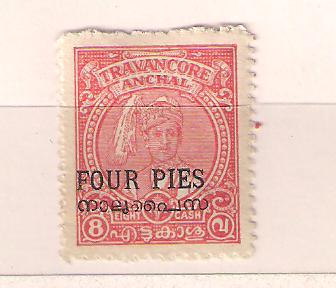





 The
royal family of Travancore owns many simple and neatly built palaces
most of them centred near the southeast corner of the Sree
Padmanabhswami Temple in Thiruvananthapuram. Palaces in the Fort area
are called the Valia Kottaram Palace Complex. Each ruler out of respect
and reverence never lived in the palace of his predecessor. Thus arose
many palaces in the Fort area which also has the much revered Sree
Padmanabhaswami temple, the abode of the titular deity of the rulers of
Travancore.
The
royal family of Travancore owns many simple and neatly built palaces
most of them centred near the southeast corner of the Sree
Padmanabhswami Temple in Thiruvananthapuram. Palaces in the Fort area
are called the Valia Kottaram Palace Complex. Each ruler out of respect
and reverence never lived in the palace of his predecessor. Thus arose
many palaces in the Fort area which also has the much revered Sree
Padmanabhaswami temple, the abode of the titular deity of the rulers of
Travancore.





















Nice Blog... Keep movng Dr.....
ReplyDelete